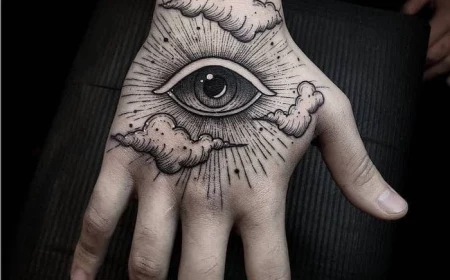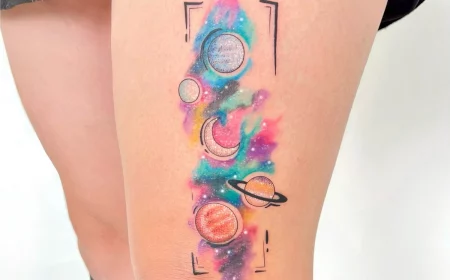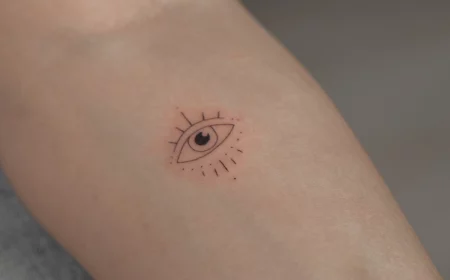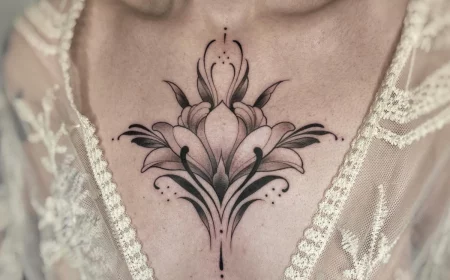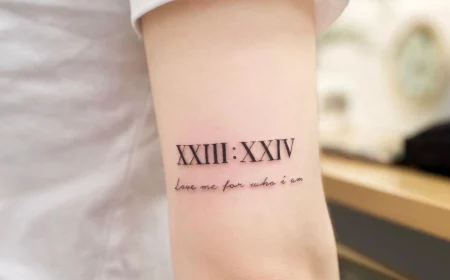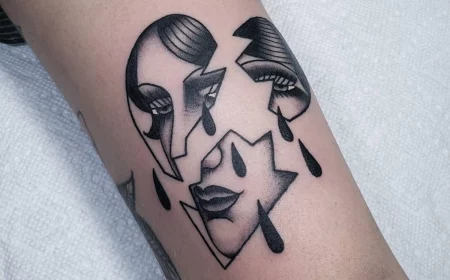Thinking About Getting Friendship Tattoos? Read This First.
I’ve spent a long, long time behind a tattoo machine, and in all those years, one request has never gone out of style: the friendship tattoo. It’s always a cool moment. Two people, buzzing with excitement, ready to make their bond a permanent part of who they are. I’ve seen it create some truly beautiful art that celebrates a deep connection. And honestly? I’ve also seen it lead to some serious regret.
In this article
My job isn’t just about slinging ink. It’s about being a guide, helping you land on a decision you’ll still be psyched about decades from now. A tattoo is a minor medical procedure and a permanent piece of art—it’s not a t-shirt you can just take off when you’re over it. So before you and your bestie commit, I want to walk you through what I’ve learned from thousands of hours of work. This isn’t about chasing trends; it’s about making a choice that’s smart, personal, and built to last.
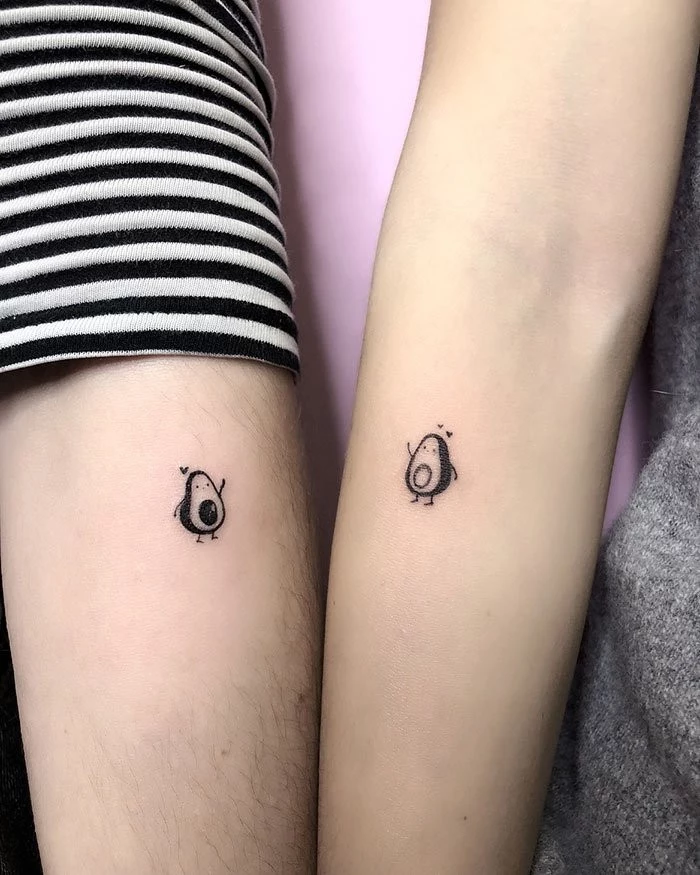
We’ll get into how tattoos actually settle into your skin, the design process from a pro’s point of view, and the tough questions you really need to ask before you even think about booking that appointment.
Why Your Tattoo Isn’t Just Drawn On
First things first, understanding how a tattoo works is key. It helps you pick a design and placement that will actually look good for years to come. A lot of people don’t know the basic science, but it directly impacts how your art ages. Knowing this stuff makes you a way better client.
Your skin has layers, right? The top one, the epidermis, is constantly shedding. If we put the ink there, your tattoo would literally flake away in a few weeks. To make it permanent, we have to go deeper, into the dermis. A tattoo machine uses super-fine needles to push ink into this stable layer, puncturing the skin thousands of times a minute. Your body’s immune system freaks out a little and sends special cells called macrophages to clean up the “invaders”—the ink particles.
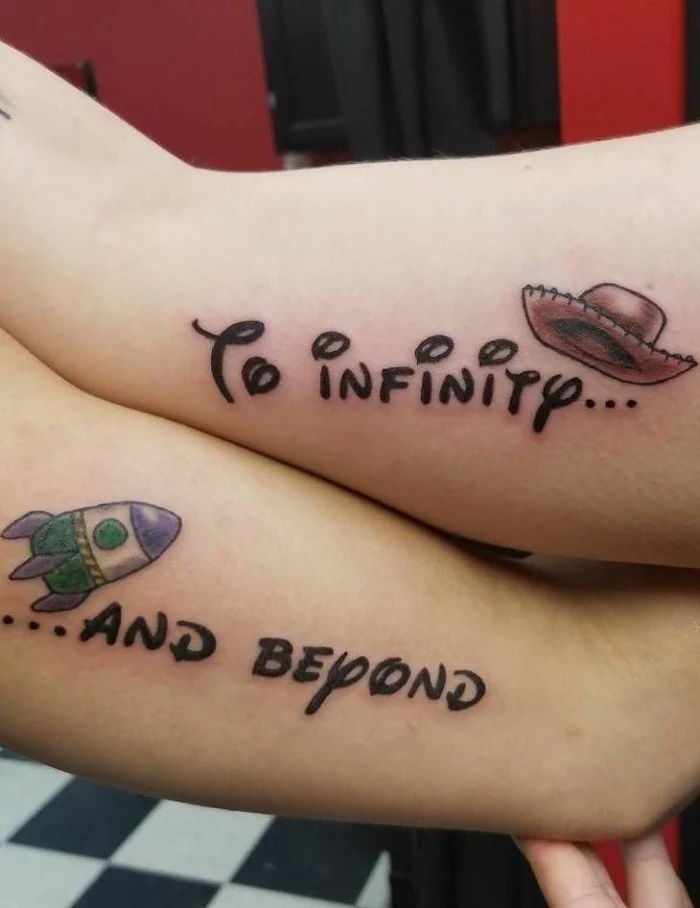
But here’s the magic trick: the ink pigments are too big for these cells to break down. So, the macrophages just trap the ink, and other particles get locked in place by skin cells called fibroblasts. They’re stuck there, permanently. You see the design through your transparent top layer of skin, which is why a fresh tattoo looks so bold and bright. It will settle and soften a little as it heals, which is totally normal.
The Enemies of a Fresh Tattoo: Sun and Time
Heads up! A tattoo isn’t a static image; it lives and changes with your body. Knowing why will help you manage your expectations.
- The Sun is NOT Your Friend: UV rays are the number one killer of tattoos. They break down ink pigments just like they fade the paint on a car. A tattoo on your forearm that sees the sun all the time will fade way faster than one on your ribcage. This is why sunscreen is non-negotiable. And I’m not talking about whatever you have lying around—use a broad-spectrum, SPF 50+ sunscreen. Seriously, it’s a requirement to keep your art looking crisp.
- The Inevitable Spread: Over many years, all tattoos spread out a tiny bit. It’s just physics. The ink particles slowly shift as your cells regenerate. This means super-fine lines will get a bit thicker, and tiny, complex details might blur together. It’s a huge factor in design. A ridiculously intricate, quarter-sized design might look amazing on Instagram, but in ten years, it could be an unreadable smudge. I often nudge clients to go a little bigger or simplify a design to make sure it stays legible.
- Location, Location, Location: Where you put the tattoo matters. A lot. Skin that’s thin or stretches constantly will wear a tattoo down faster. Think fingers, hands, feet, and elbows. These high-motion areas are notorious for fading and almost always need touch-ups down the line. A tattoo on a more stable spot, like your calf, thigh, or outer bicep, will hold its shape and color much, much better.
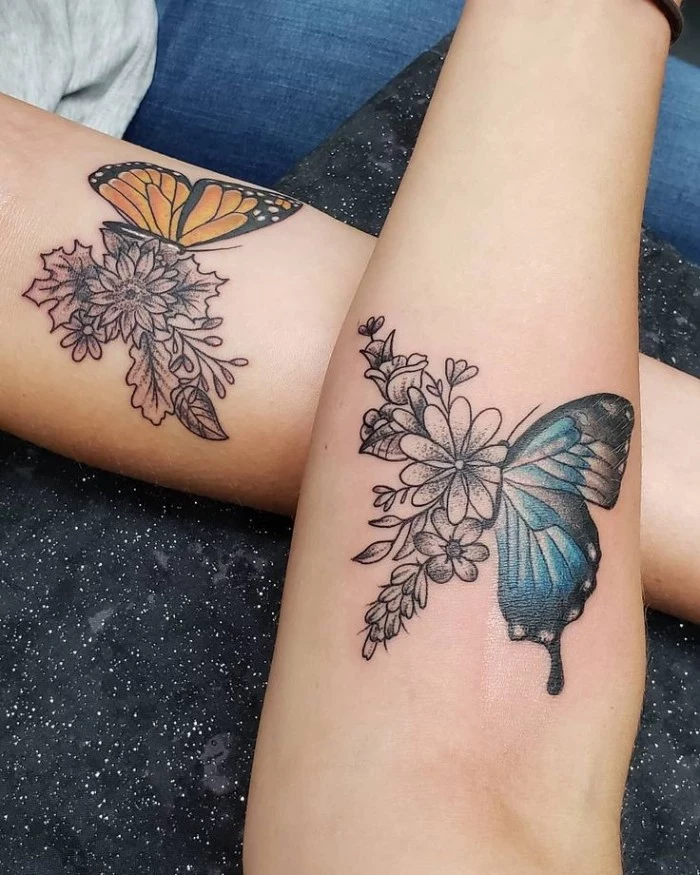
Moving Beyond Pinterest: The Consultation
The most important part of the whole process happens before a needle ever gets near you. It’s the consultation. This is where we go from a generic idea to something that actually means something.
Friends often come in with a phone, showing me a pin of a tiny infinity symbol on a wrist. My first question is always, “Okay, but what does this mean to you?” Your friendship is one-of-a-kind, so why shouldn’t your tattoo be? I try to dig a little deeper with questions like:
- What’s a core memory you two share? A specific trip? A concert?
- Is there an inside joke or a goofy word that always gets you laughing?
- What do you admire in each other? Maybe one of you is the anchor and the other is the sail.
I once had two friends come in wanting matching anchors. It’s a classic, but a bit generic. After chatting for twenty minutes, I found out they’d bonded on a wild cross-country road trip, living off gas station coffee. We ended up designing two small, stylized paper coffee cups with the map coordinates of their favorite viewpoint from the trip. It was personal, unique, and told their story. It meant so much more than an anchor ever could.
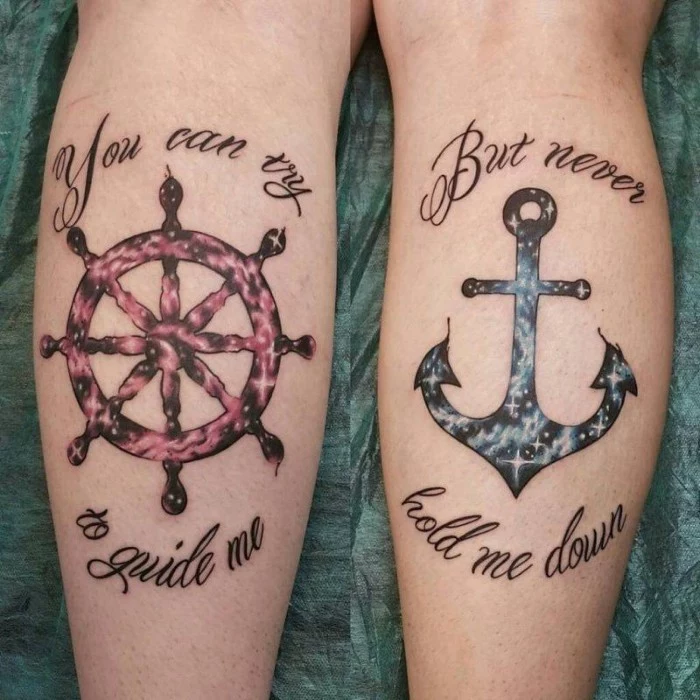
The Stand-Alone Test: A Crucial Rule
This is a big one for me, especially with friendship tattoos. I always ask: “If you weren’t friends in twenty years, would you still love this tattoo on its own?” Life happens. It’s unpredictable. A great friendship tattoo should also be a great piece of art by itself. I once did two halves of a very specific, obscure cartoon character for two friends. They had a falling out, one moved away, and the other person was left with a tattoo that made no sense and was just a constant, sad reminder. That’s why I’m so big on this rule now. A beautifully drawn flower or a cool geometric shape will always be a good tattoo, no matter what happens.
By the way, they don’t have to be identical! Sometimes the best designs are two parts of a whole—a sun and moon, a lock and key, or two different plants that complement each other. This gives each person an individual piece of art that still shares a powerful meaning.
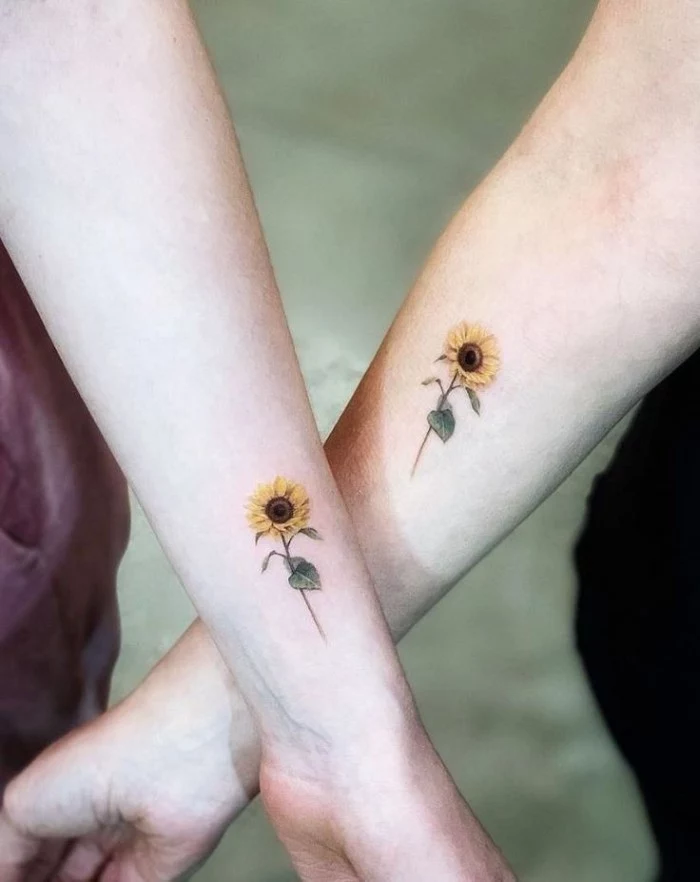
Let’s Get Real: The Practical Stuff
Alright, you’re excited, you have an idea. Now for the nuts and bolts: placement, cost, and finding the right person for the job.
Where to Put It
Think hard about this. It affects the pain, the longevity, and your daily life. Is this a private reminder for just you two, or do you want the world to see it? A tattoo on your ribs is personal; one on your forearm is a conversation starter. Also, think about pain. Bony spots like the ribs, feet, and spine tend to hurt more. Fleshy areas like the outer thigh and bicep are usually more manageable. Be honest with yourselves about your pain tolerance!
The Reality of Cost
Here’s the deal: good tattoos aren’t cheap, and cheap tattoos aren’t good. You’re paying for an artist’s skill, sterile supplies, and their time. Most reputable shops have a minimum price, usually somewhere between $100 and $150, just to cover the cost of a new, sterile setup for each client. For a pair of small, relatively simple friendship tattoos, you should probably budget between $150 and $400 total, but this can vary wildly based on the artist’s hourly rate and the design’s complexity. Always ask if your artist charges by the piece or by the hour so there are no surprises.
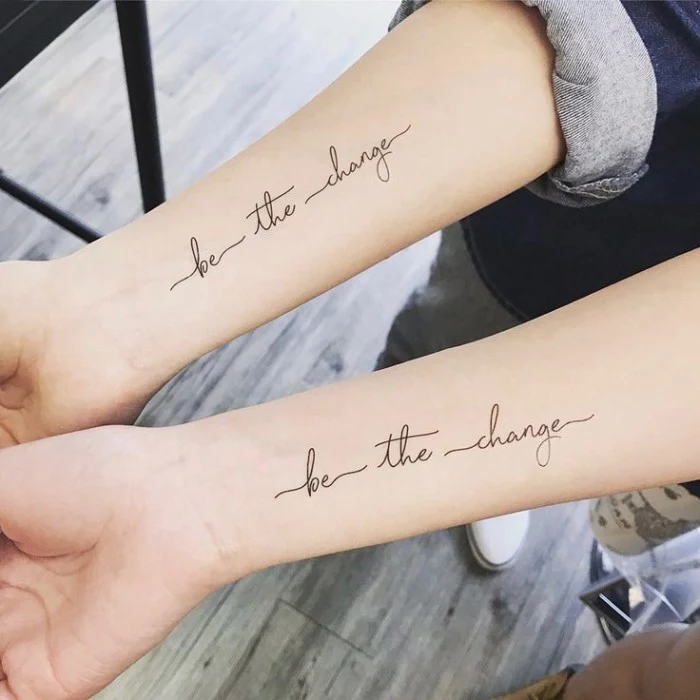
And don’t forget to budget for a tip! If you had a great experience and love your art, 20% is a standard way to show your appreciation.
How to Find Your Artist
Don’t just Google “tattoo shop near me.” You need to find an artist whose style you love. Instagram is your best friend here. Search for hashtags like
[yourcity]tattoo (e.g.,
nyctattoo) or
[style]tattoo (e.g.,
finelinetattoo, #americantraditionaltattoo).
A quick tip: Look for photos of HEALED work in their portfolio, not just the glossy, fresh-out-of-the-studio shots. Healed work shows you how their tattoos actually settle into the skin, which is what you’ll be living with.
Your Pre-Tattoo Checklist
Ready for the big day? Awesome. Here’s how to prepare to make it a smooth, positive experience:
- Eat a real meal about an hour before your appointment. Low blood sugar is the enemy of a good tattoo session.
- Hydrate! Drink plenty of water the day before and the day of.
- Bring your government-issued ID. No ID, no tattoo. It’s the law.
- Dress for success. Wear something comfortable and loose that gives the artist easy access to the spot you’re getting tattooed.
- Pack a distraction. A book or headphones are great, but also be ready to chat! We like getting to know our clients.
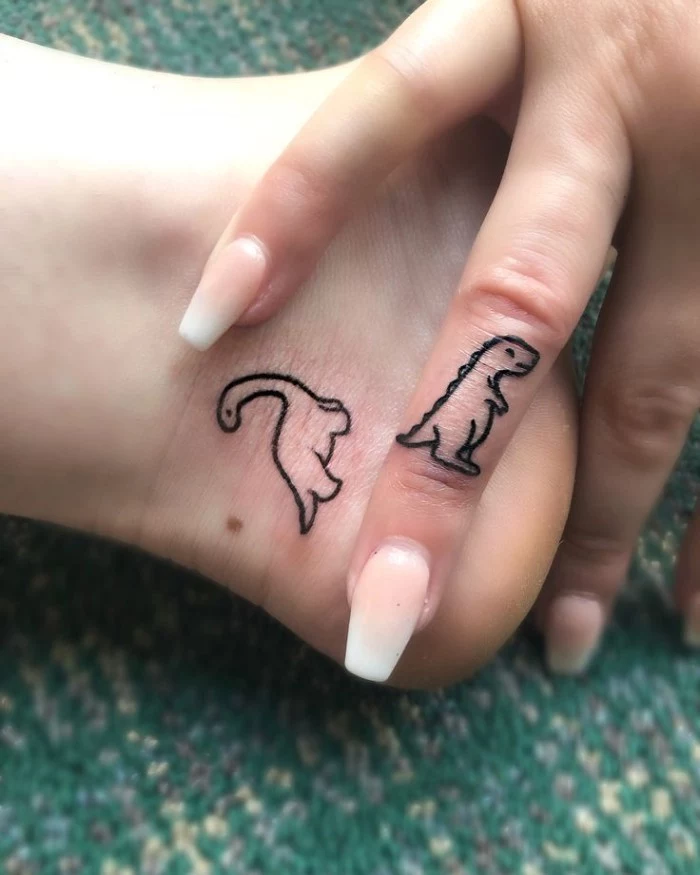
Aftercare 101: Don’t Mess This Up!
The tattoo artist’s job ends when you walk out the door. Now it’s on you. Proper aftercare is what makes or breaks a tattoo.
For the first 2-3 days, follow your artist’s instructions on how long to keep it wrapped. Then, gently wash the tattoo 2-3 times a day with a mild, unscented soap (like Dial Gold). Pat it dry with a clean paper towel—never a cloth towel, which can harbor bacteria. Apply a very thin layer of an approved ointment like Aquaphor. Less is more!
From day 4 to about week 2, you can switch from the ointment to a gentle, unscented lotion. Your tattoo will start to get flaky and super itchy. This is the hardest part. DO NOT SCRATCH OR PICK AT IT. Just let the flakes fall off naturally. Messing with it now can pull the ink out and leave you with a patchy tattoo.
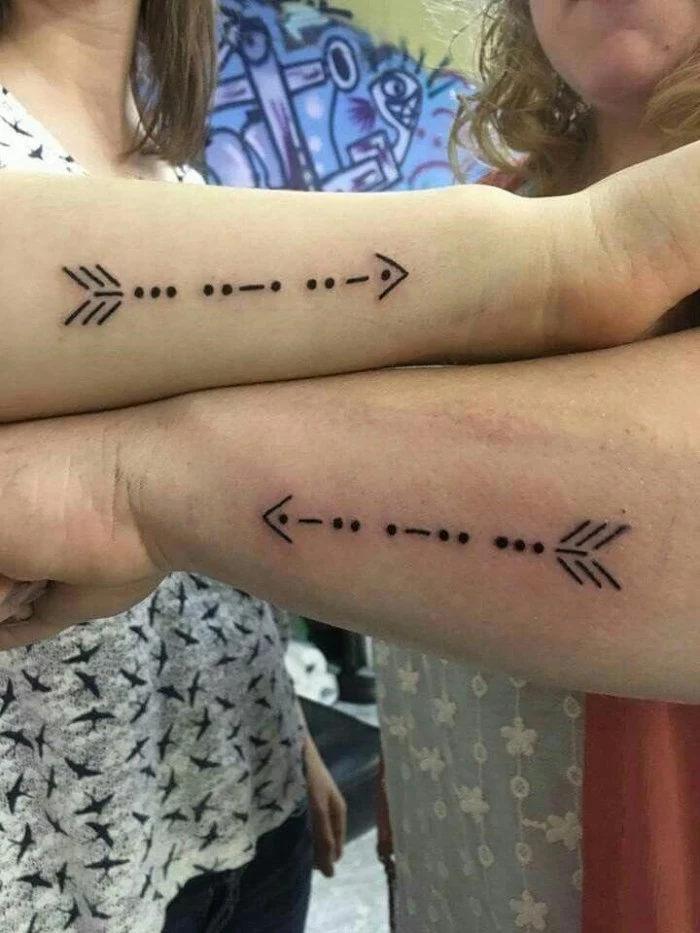
Getting a friendship tattoo is an incredible way to honor a connection. Just put in the time and thought beforehand to make sure it’s a piece of art you’ll both cherish forever… no matter where life takes you.
Inspiration Gallery
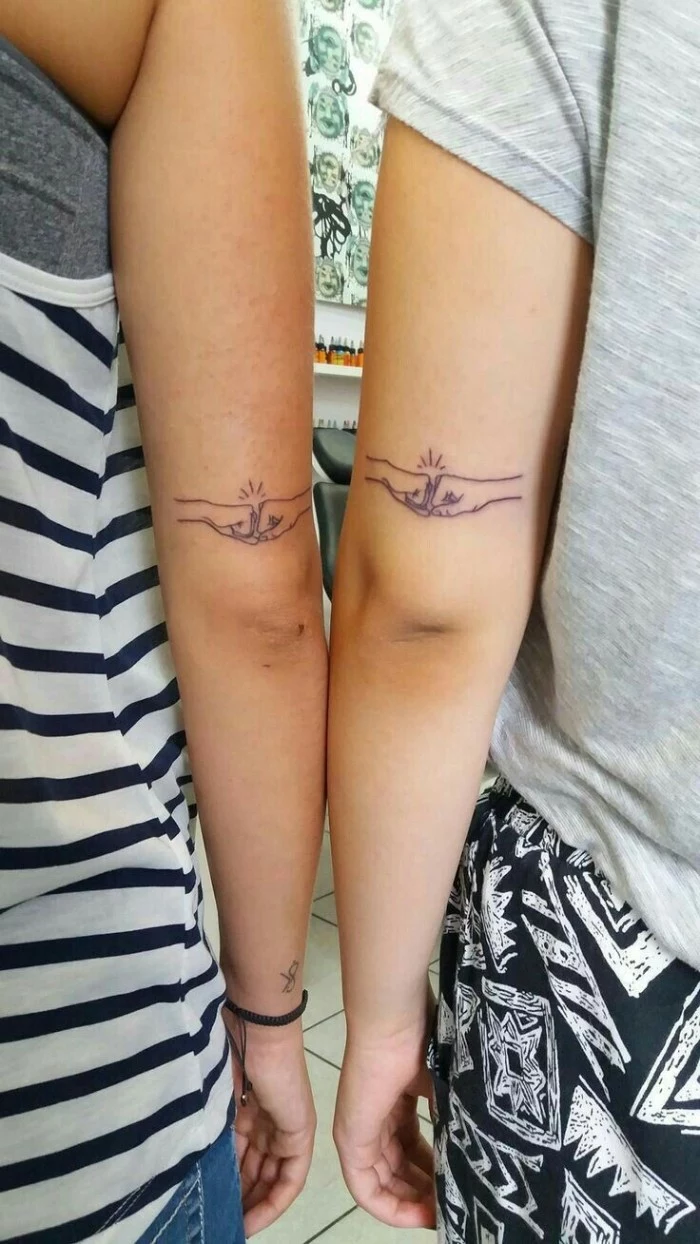
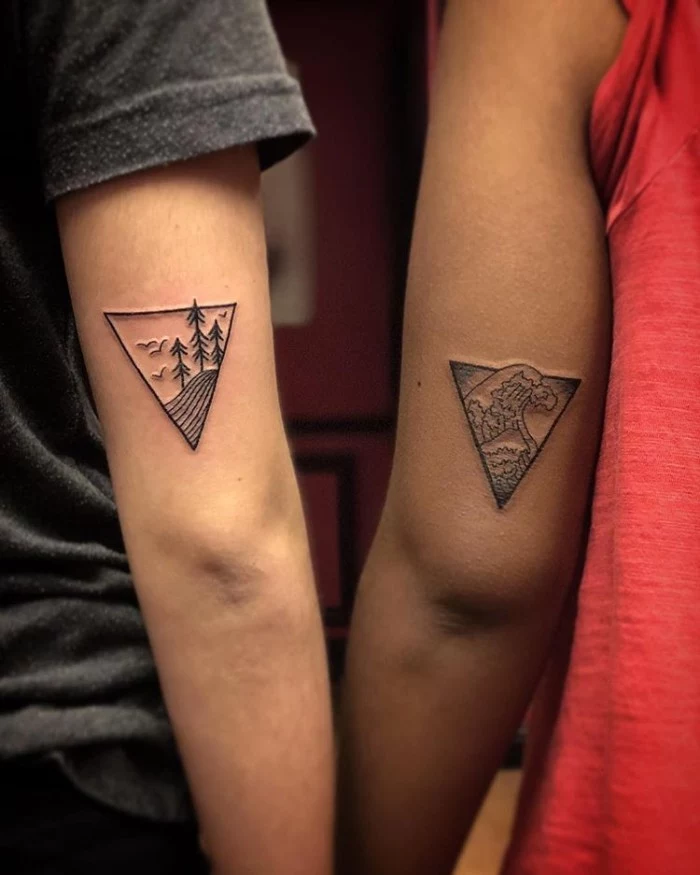
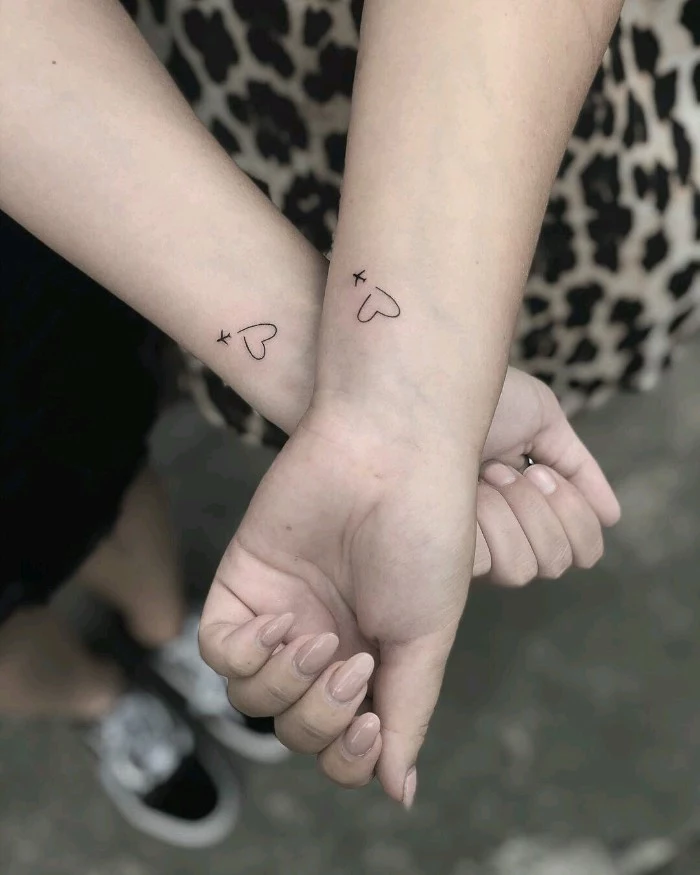
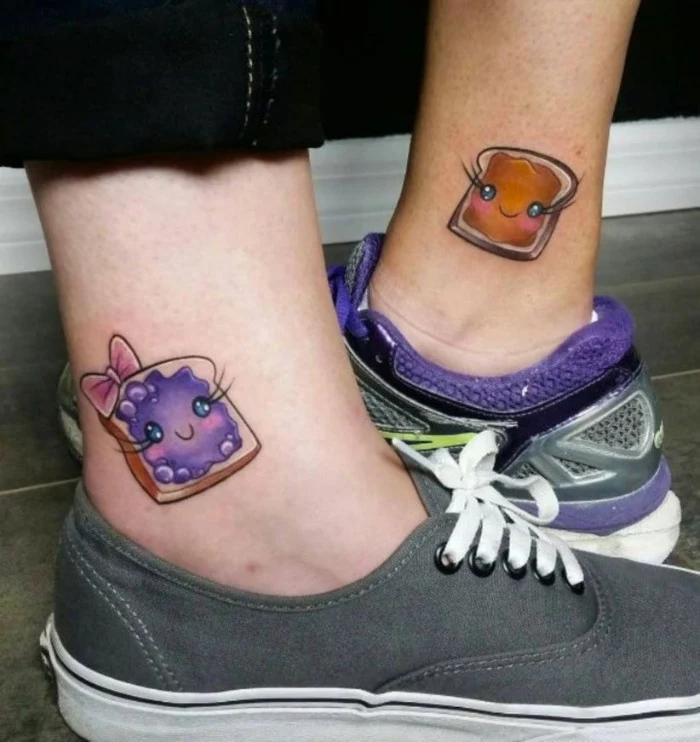
Don’t underestimate the power of a good night’s sleep and a solid meal before your appointment. Getting tattooed is a marathon for your body, not a sprint. Showing up well-rested and with stable blood sugar will make the experience significantly more comfortable for you and allow your artist to do their best work without managing a dizzy client.
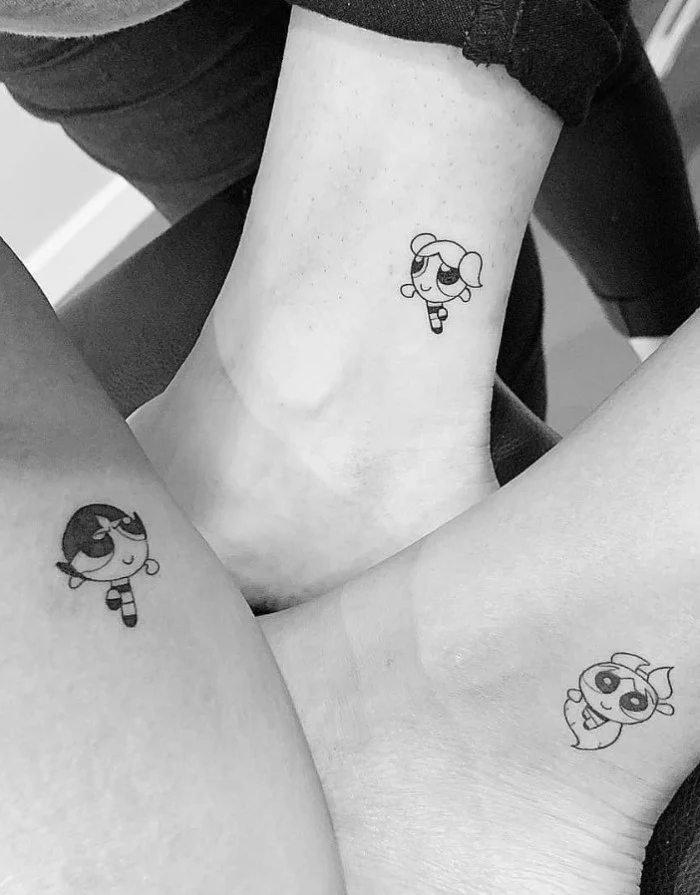

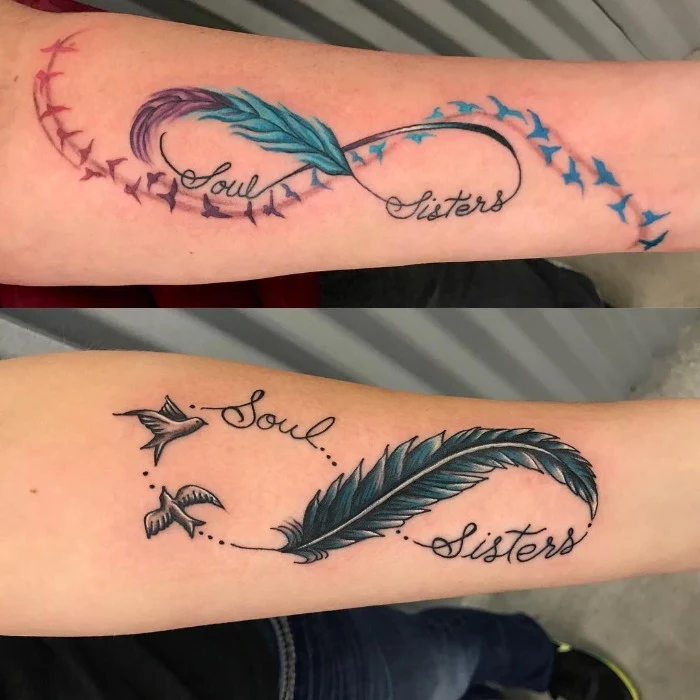
- Keep it clean: Gently wash the tattoo 2-3 times a day with a mild, fragrance-free soap.
- Moisturize, don’t suffocate: Apply a very thin layer of artist-recommended ointment like Aquaphor for the first few days, then switch to a gentle, unscented lotion.
- No swimming: Avoid submerging your new tattoo in pools, hot tubs, or natural bodies of water for at least 2-3 weeks to prevent infection.
- Stay out of the sun: A fresh tattoo is an open wound. Keep it covered from direct sunlight until it’s fully healed.
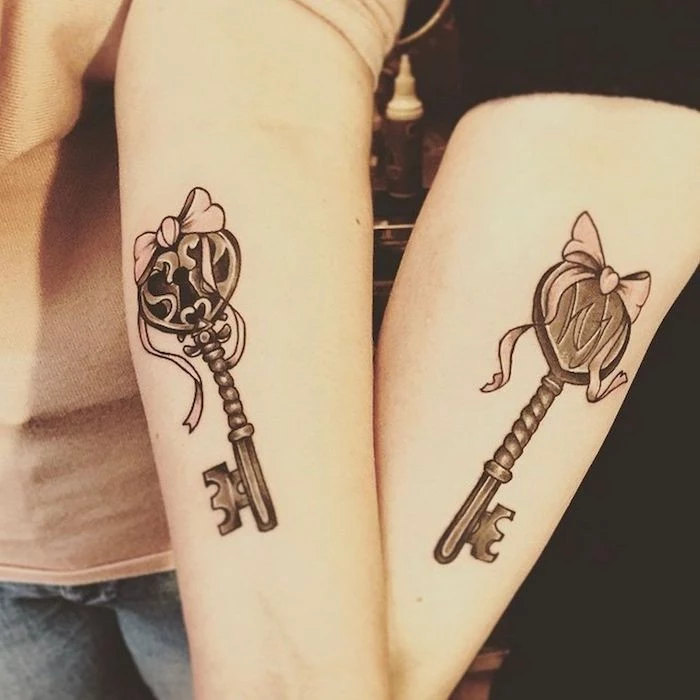
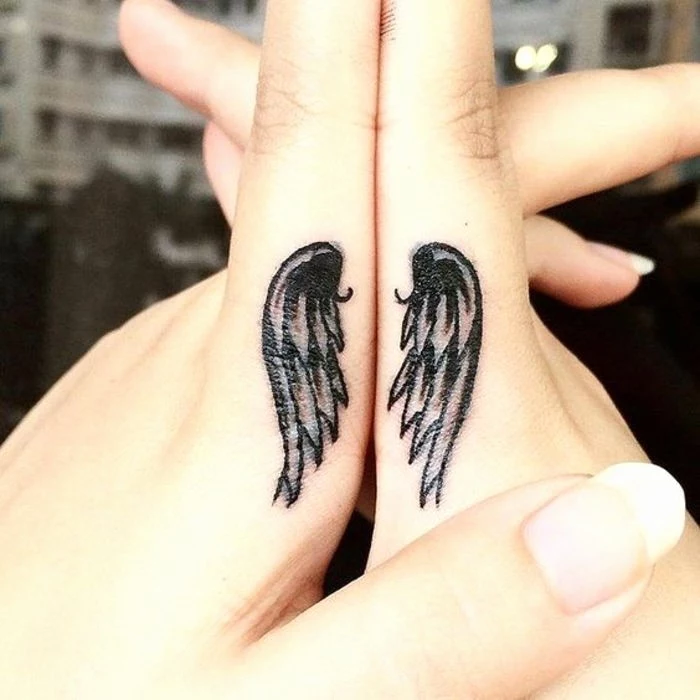
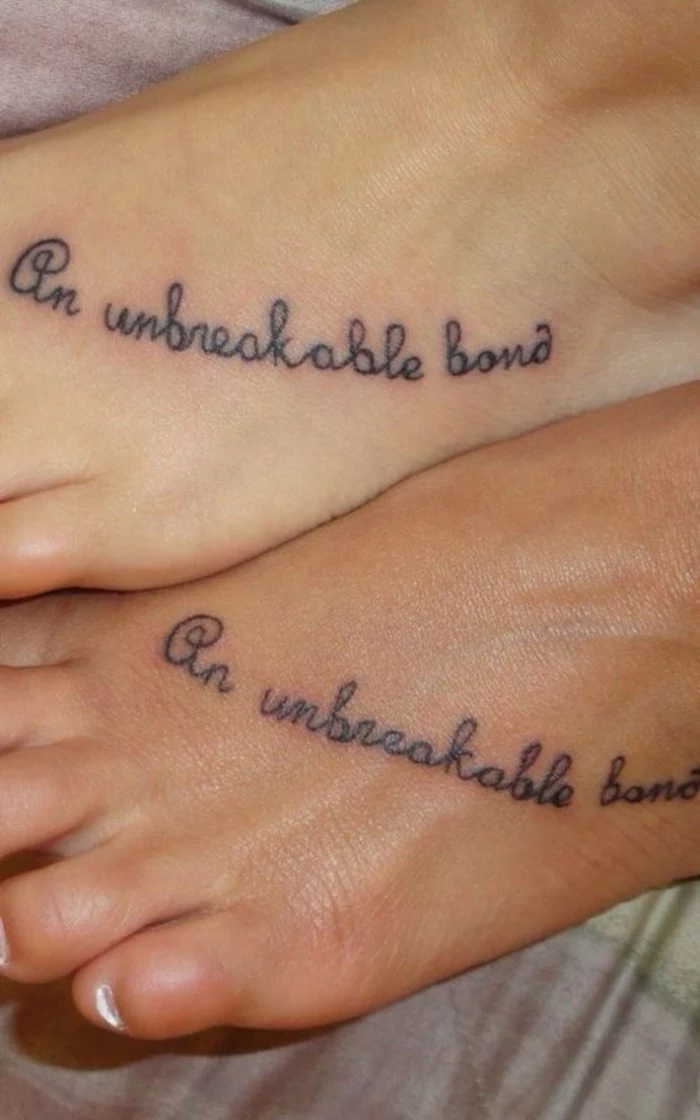
The vacation tattoo trap: Getting inked on a whim during a trip can seem like the perfect way to commemorate a shared adventure, but it’s a huge gamble. You won’t have time to properly vet the artist or studio, and your aftercare will be compromised by travel, sun, and swimming. It’s better to gather inspiration on your trip and take it to your trusted artist back home.
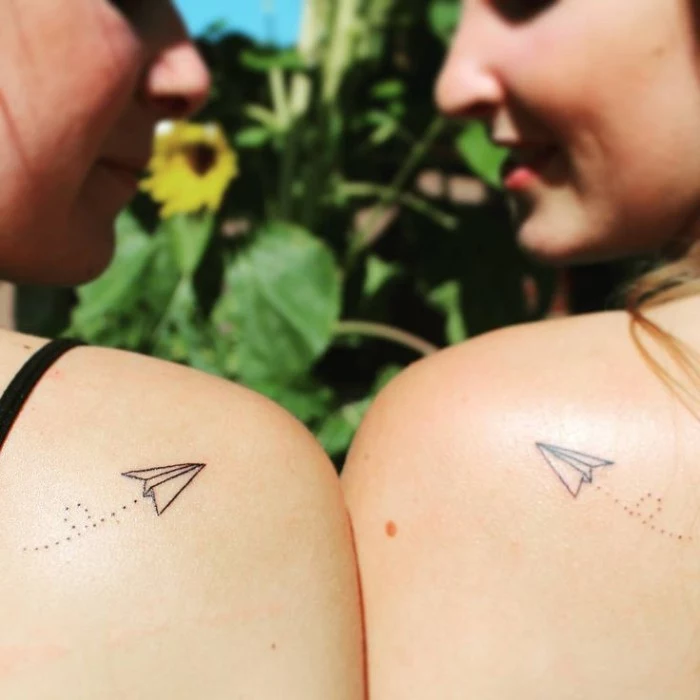
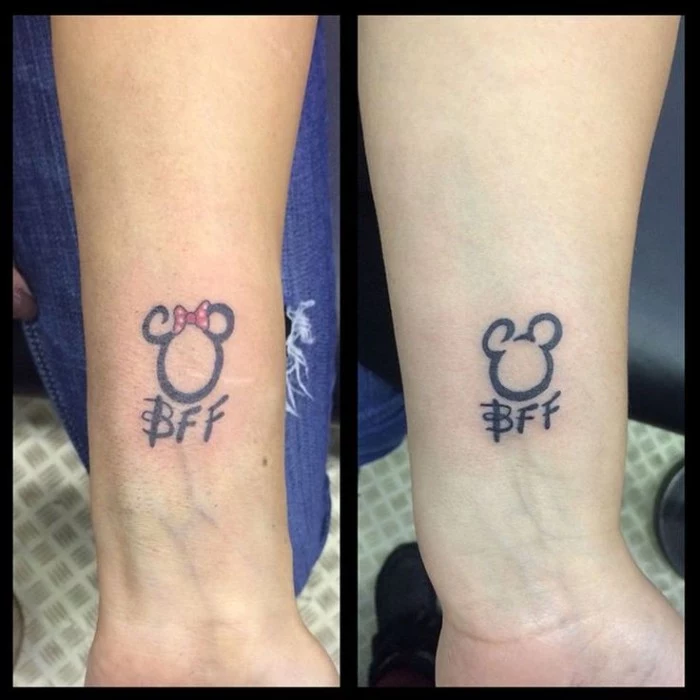
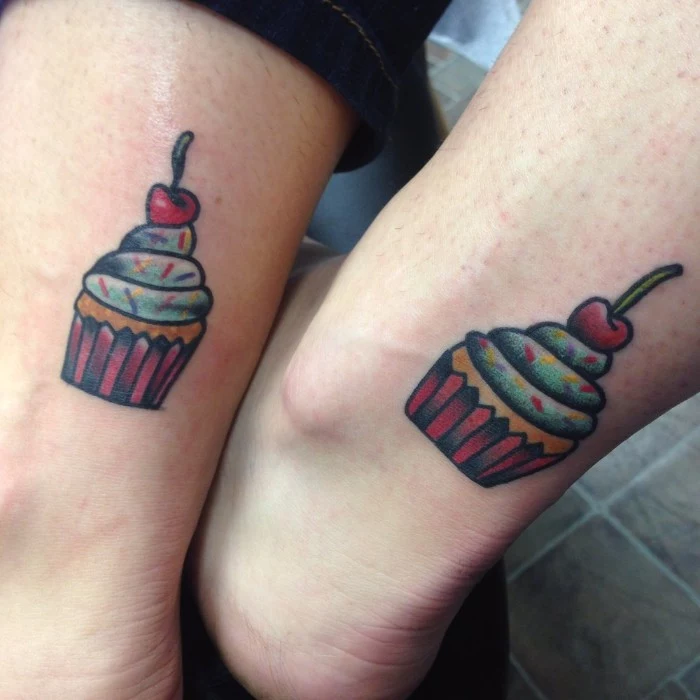
Psychology studies show that enduring a challenging or painful experience with someone else can significantly strengthen social bonds. The shared needle-buzz and healing process is a modern-day ritual that literally cements your connection.
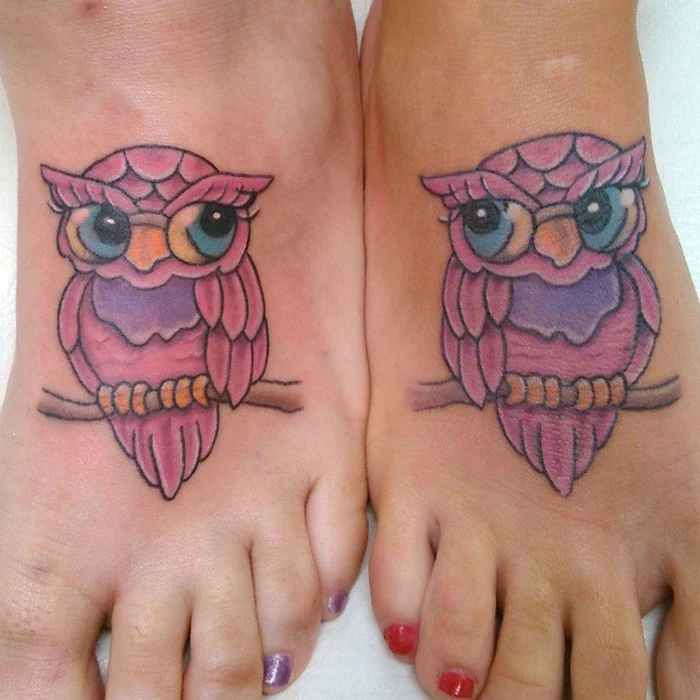
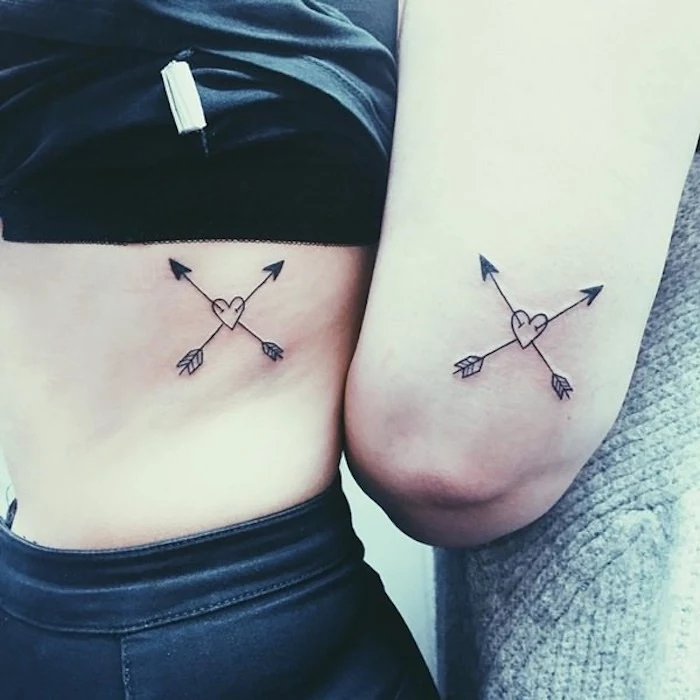
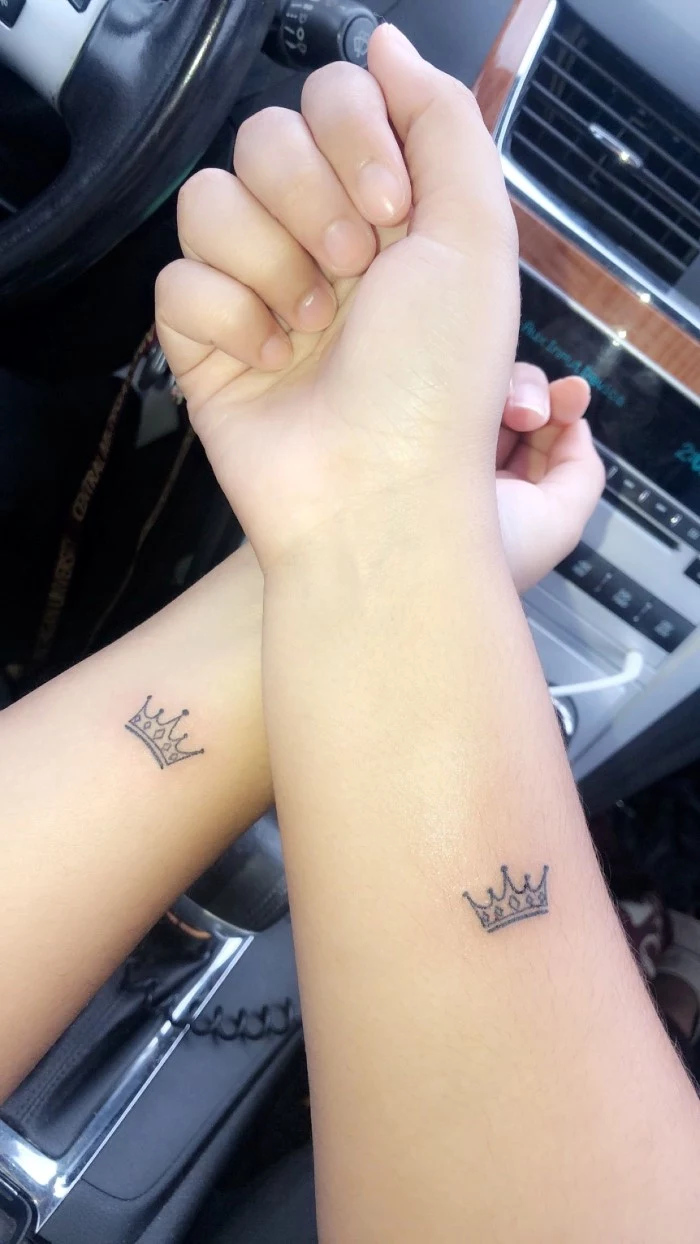
Stuck on a design? Move beyond the obvious. Instead of getting matching symbols, consider a concept that only you two understand.
- Think about a shared memory: The coordinates of a meaningful place, a stylized map of a favorite road trip, or an inside joke represented by an abstract shape.
- Consider complementary opposites: Sun and moon, salt and pepper, or even two different flowers that grow in the same garden. The link is personal, not literal.
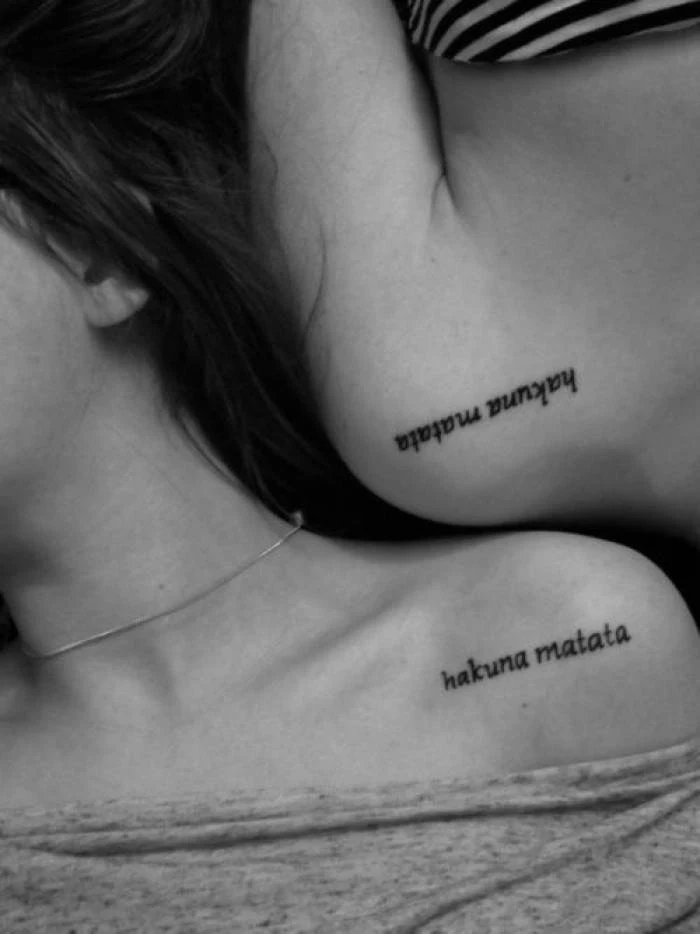
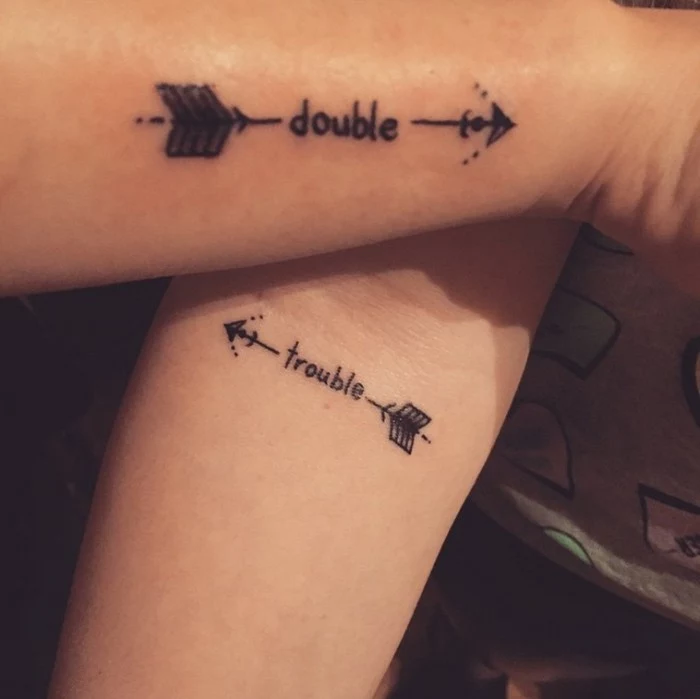
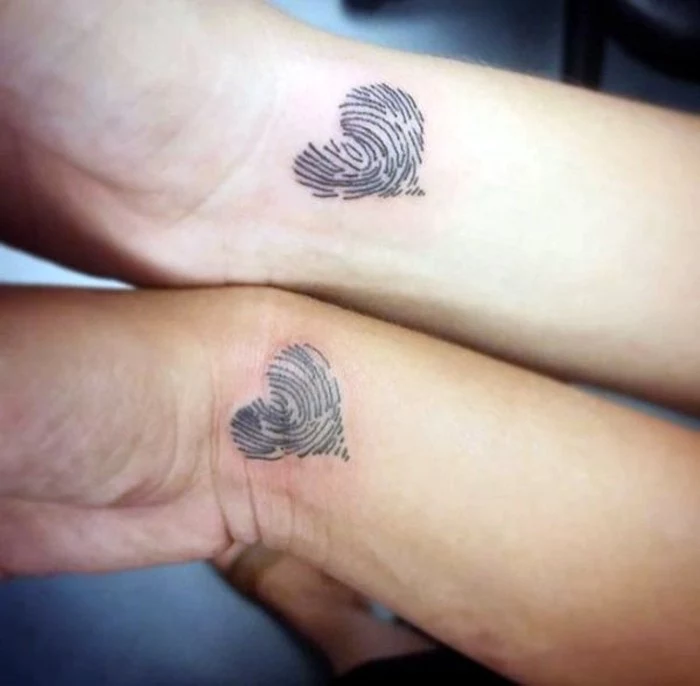
How much should we budget for this?
A good tattoo isn’t cheap. Most reputable studios have a minimum charge (often $100-$150) even for a tiny tattoo, as it covers the cost of sterile, single-use equipment. For a small, simple friendship tattoo, expect to pay anywhere from the shop minimum to $250 each, depending on size, detail, and artist experience. And don’t forget to factor in a tip for your artist—20% is standard for good service.
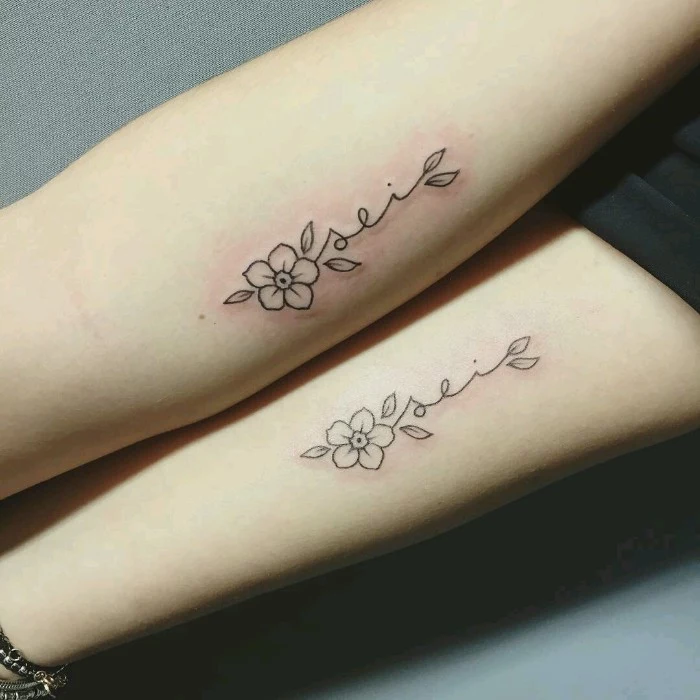
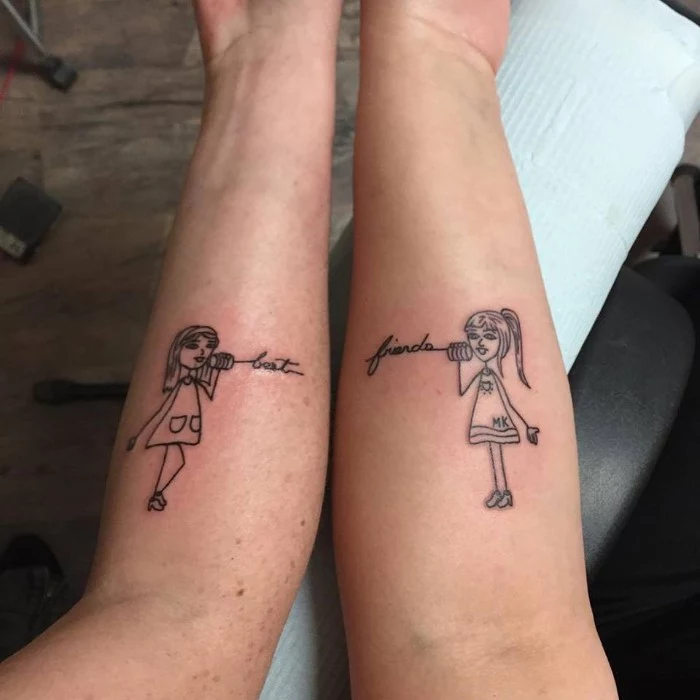
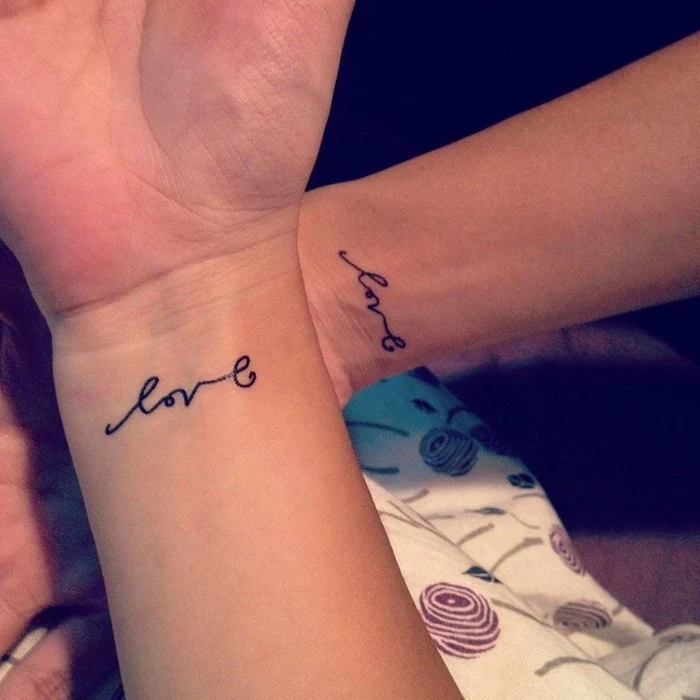
Classic Ointment: Products like Aquaphor or A+D are tried-and-true. They create a protective barrier that aids initial healing. They are inexpensive and effective but can feel heavy or clog pores if over-applied.
Modern Tattoo Film: Brands like Saniderm or Recovery Derm Shield are transparent, adhesive bandages applied by the artist. They keep the tattoo clean for several days, making aftercare foolproof for the critical first stage.
Many artists now prefer film for small tattoos, as it protects the piece and often results in more vibrant healing.
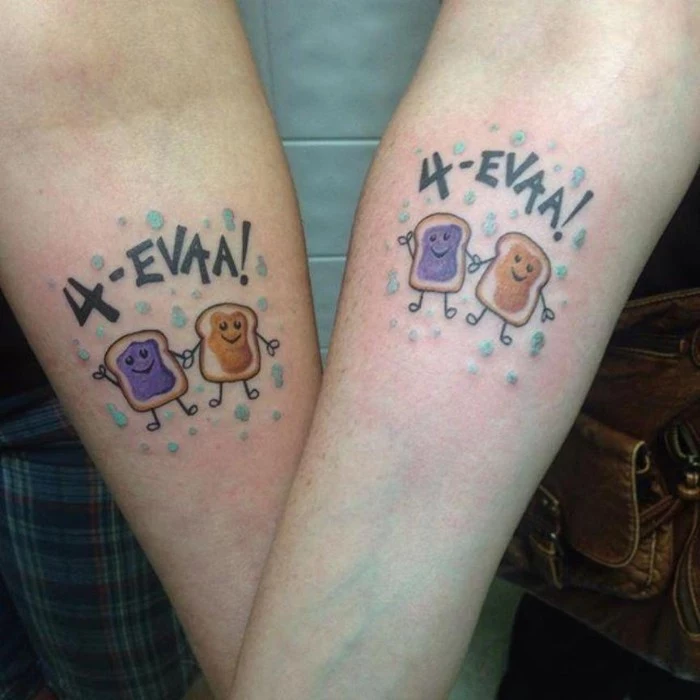
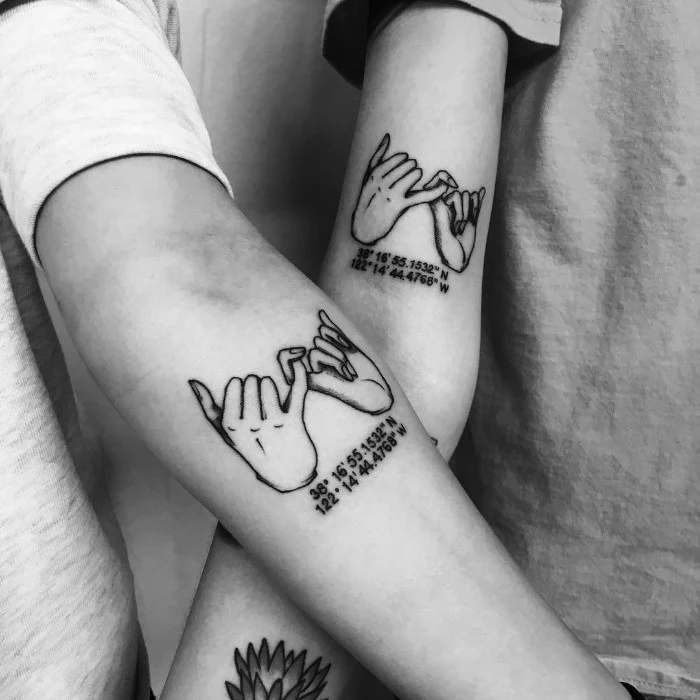
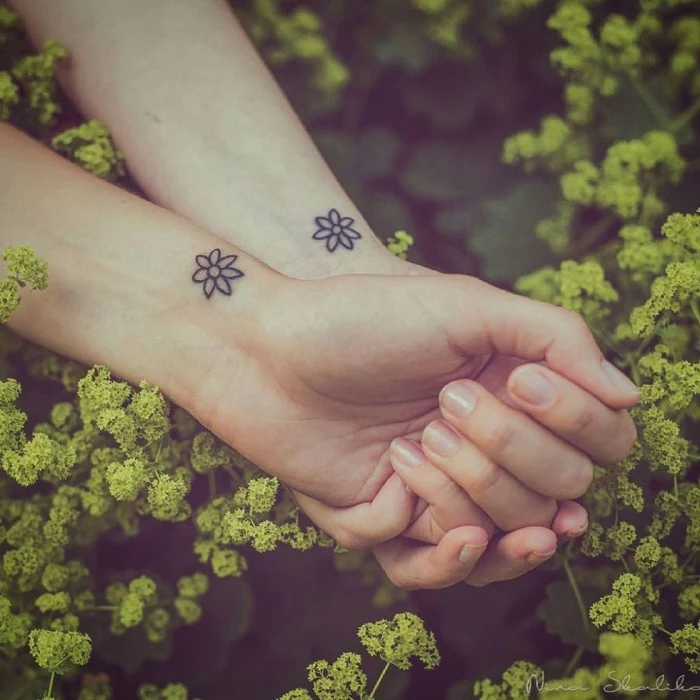
A recent survey found that while 78% of people with tattoos don’t regret them, the most commonly regretted tattoos are those featuring someone else’s name or a symbol tied to a specific relationship.
This doesn’t mean friendship tattoos are a bad idea, but it underscores the importance of choosing a design that will still hold meaning for you personally, even if the dynamics of the friendship were to change years down the line.
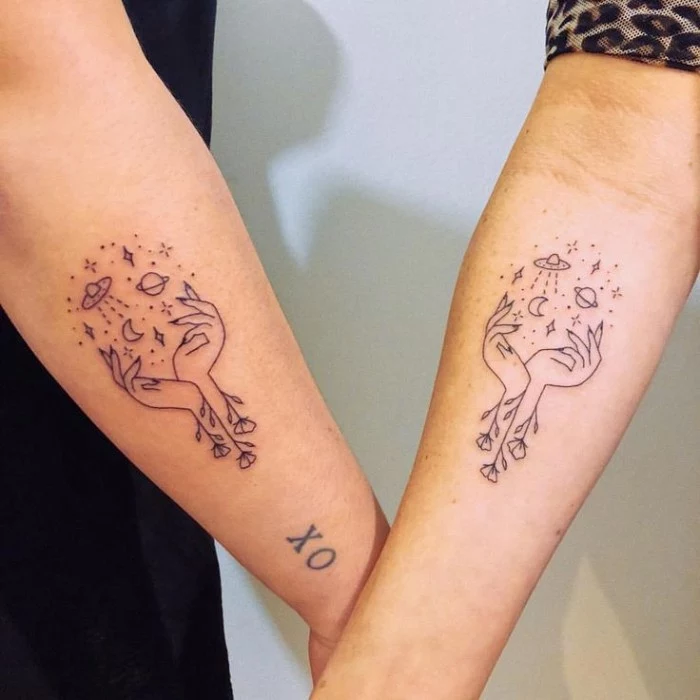
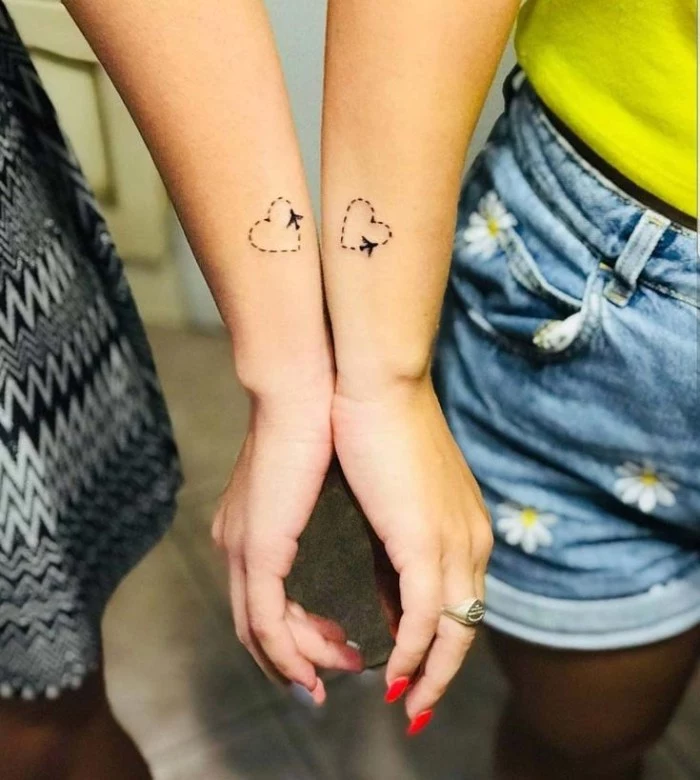

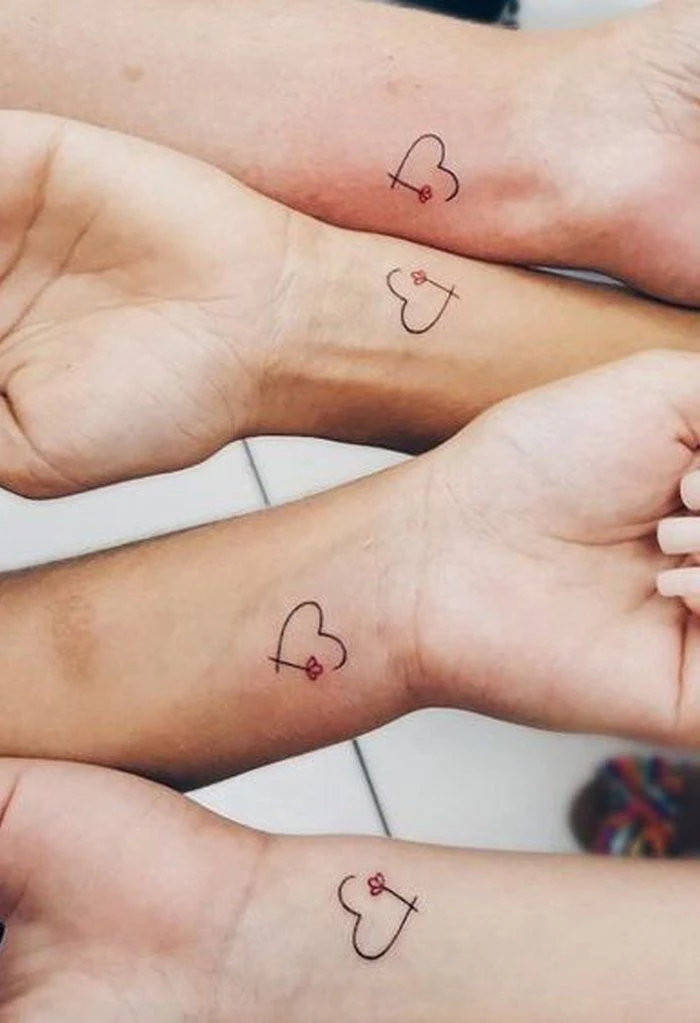
- They offer incredible elegance and subtlety.
- They are perfect for discreet placements like behind the ear or on the inner wrist.
- They heal relatively quickly due to less trauma to the skin.
The secret? Single-needle tattoos. This technique uses just one needle to create ultra-fine lines, but be warned: it requires a highly skilled artist and is not suitable for all skin types or placements, as fine lines can be more prone to fading over time.
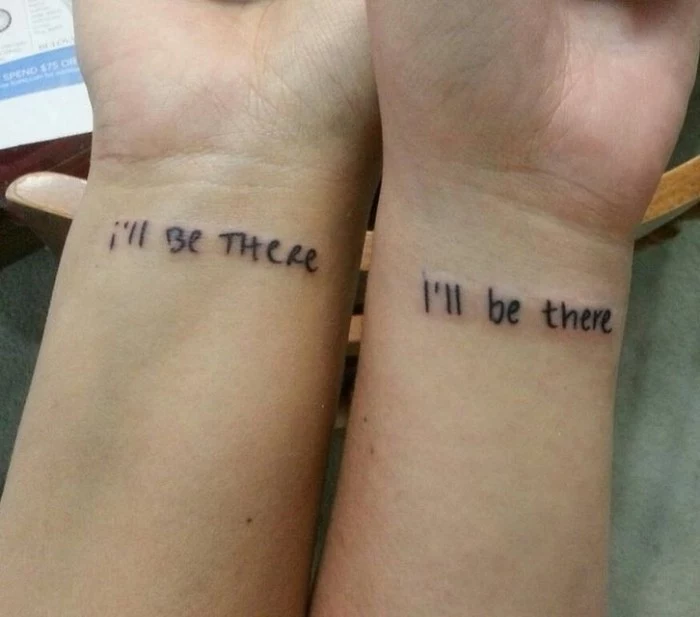
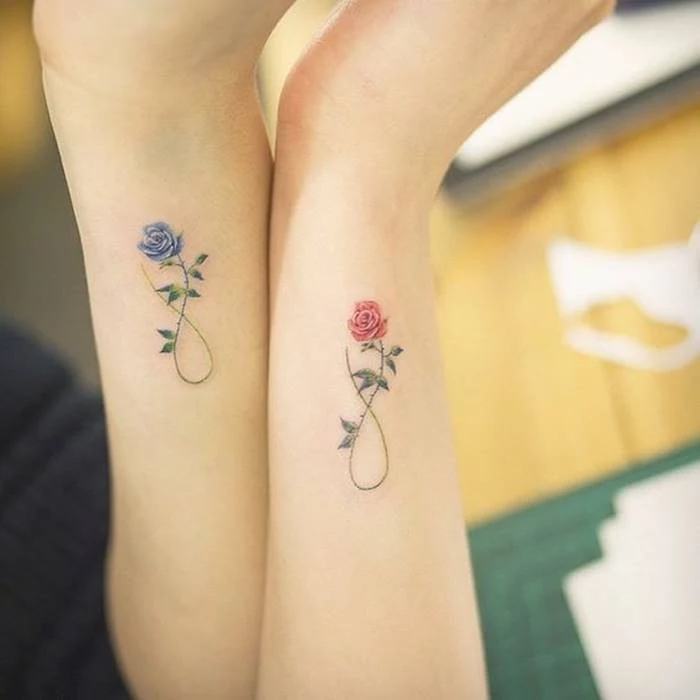
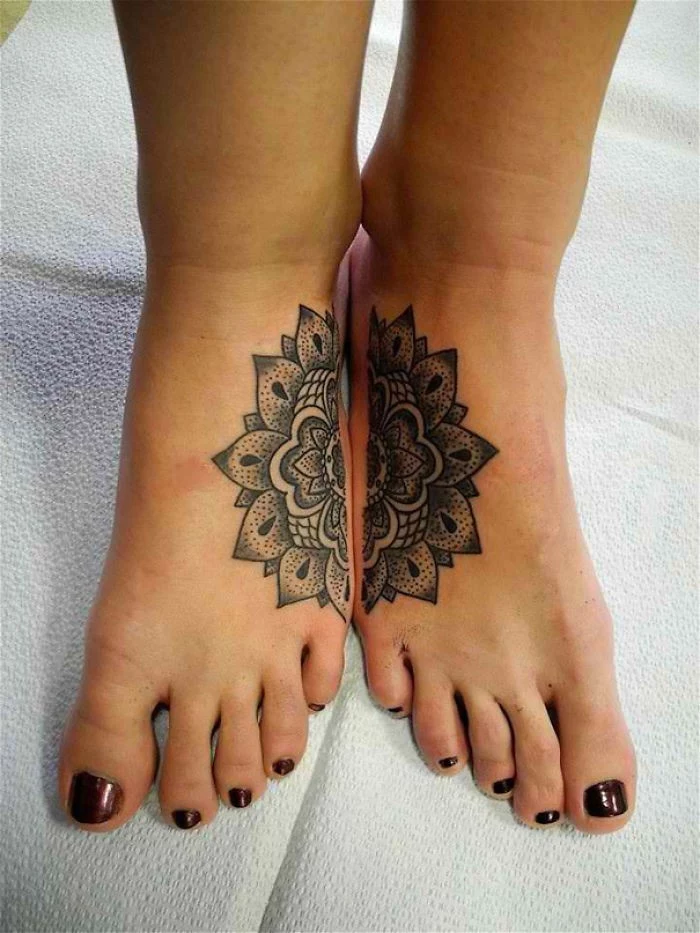
Instead of the classic infinity symbol, why not choose something more personal from the natural world? Think of two different birds that migrate together, constellations that were in the sky on a significant night, or the molecular structure of a compound like serotonin or caffeine, depending on what fuels your friendship. The more unique the reference, the more special the art.
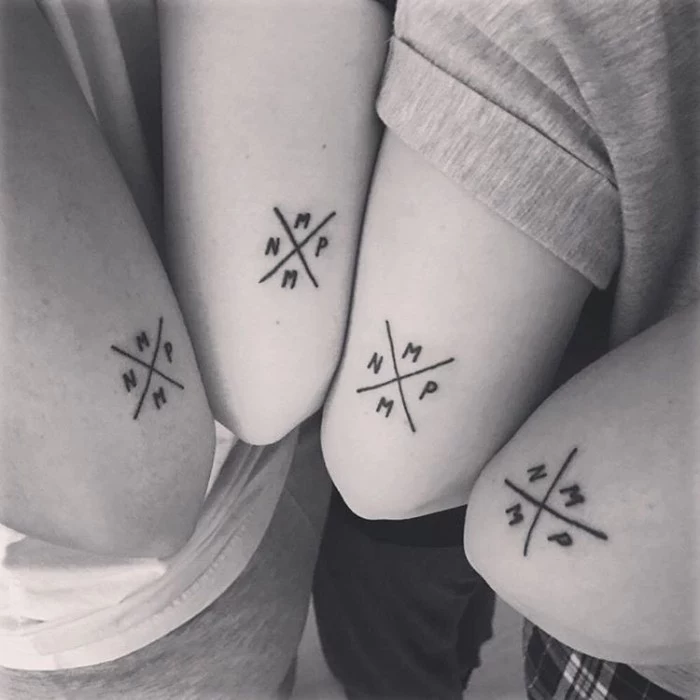
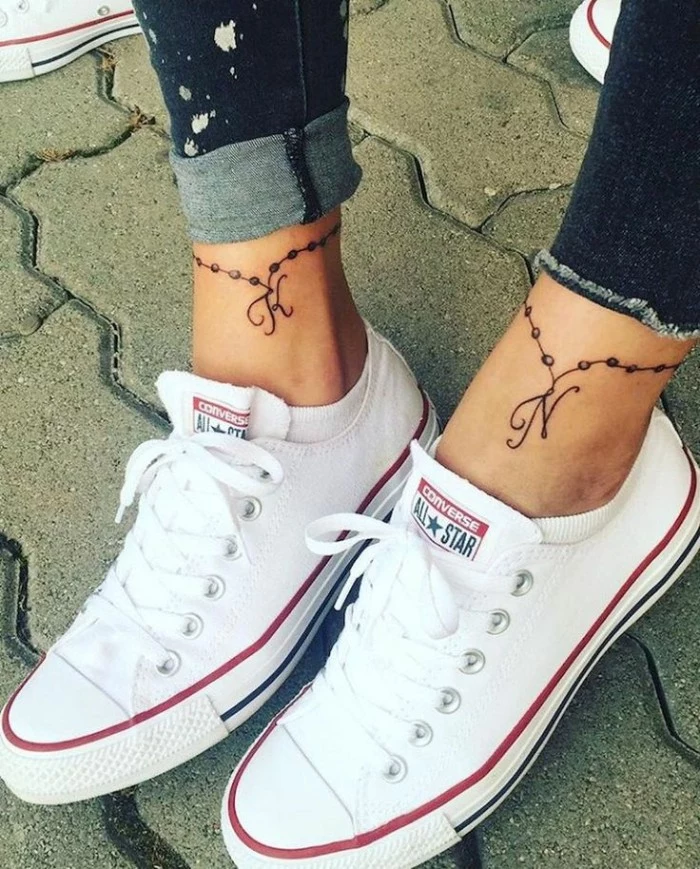
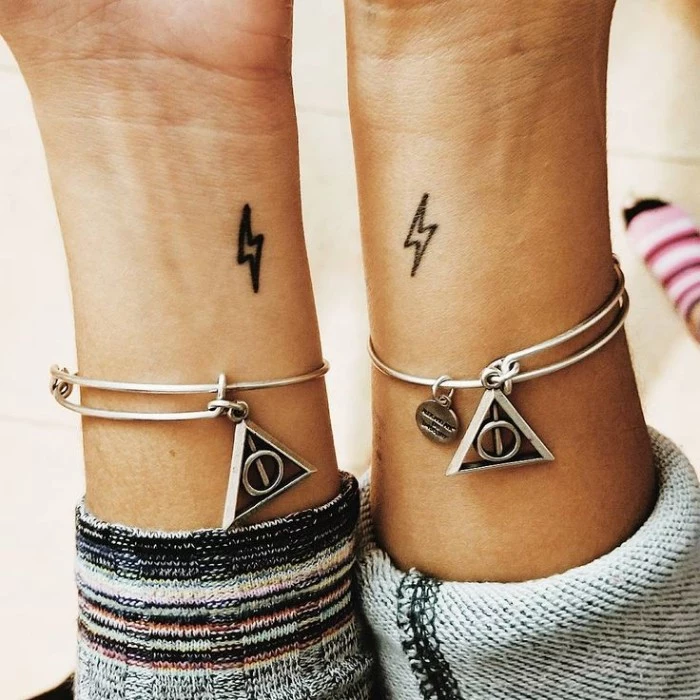
- Your government-issued ID (an absolute must!).
- A comfortable outfit that allows easy access to the area being tattooed.
- A bottle of water and a sugary snack to keep your blood sugar up.
- Headphones, if you want to zone out with your own music or a podcast.
- Your payment method, plus cash for a tip.
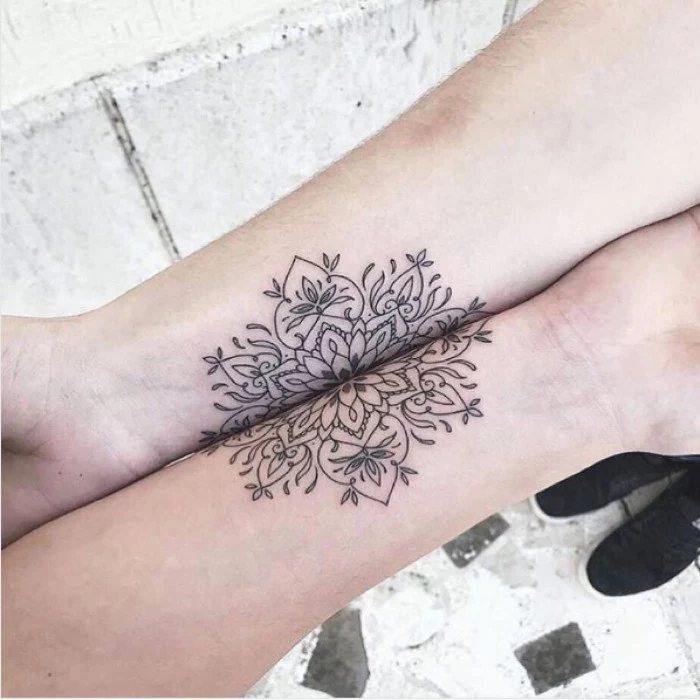
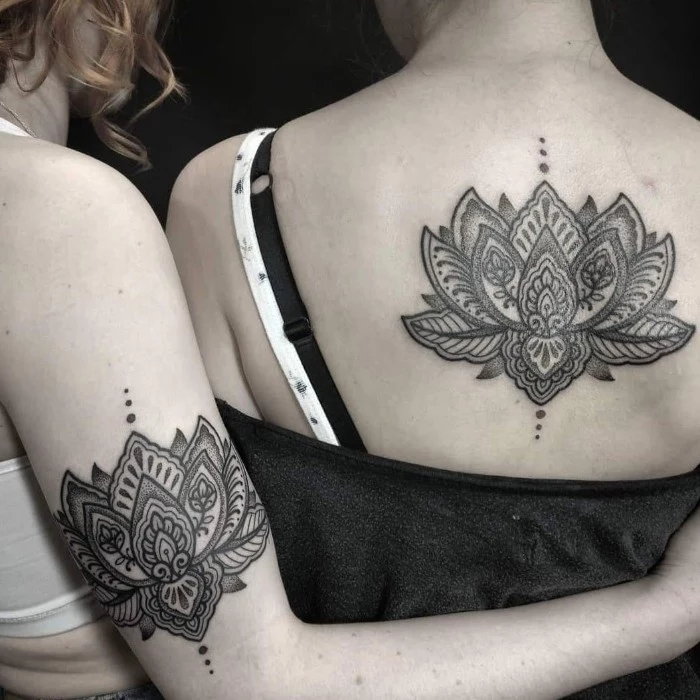

Placement is more than just aesthetics: Think about how a tattoo will age. A design on your finger, palm, or the side of your foot will fade dramatically and require frequent, costly touch-ups. Areas with thinner skin and more movement, like the elbow ditch or wrist, can be more painful. Discuss longevity and pain with your artist—they know which spots hold ink best.
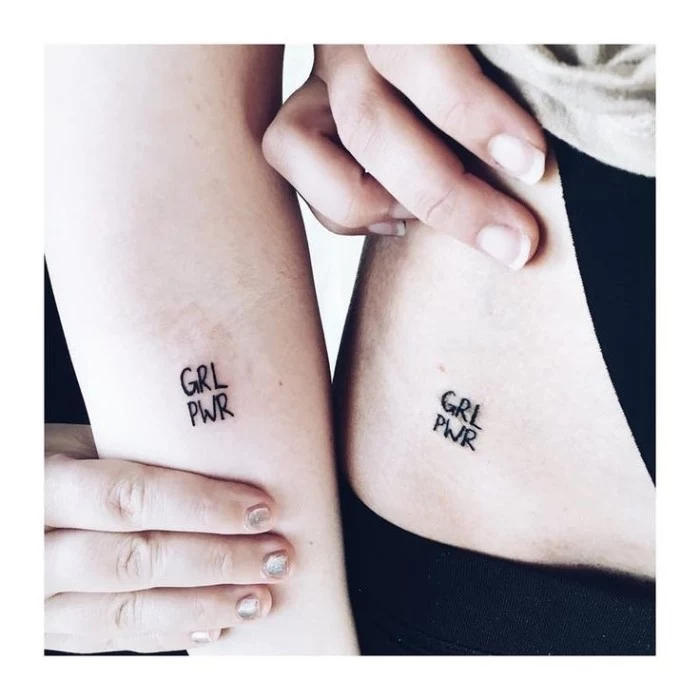
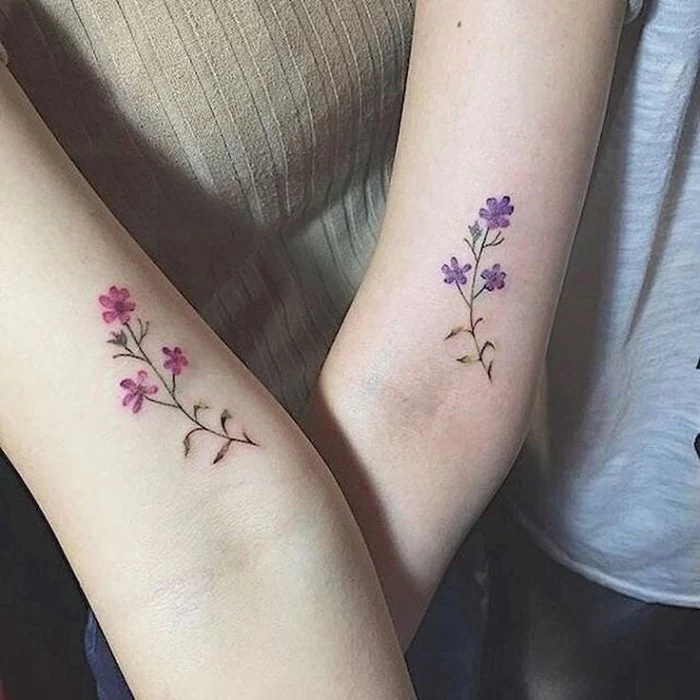
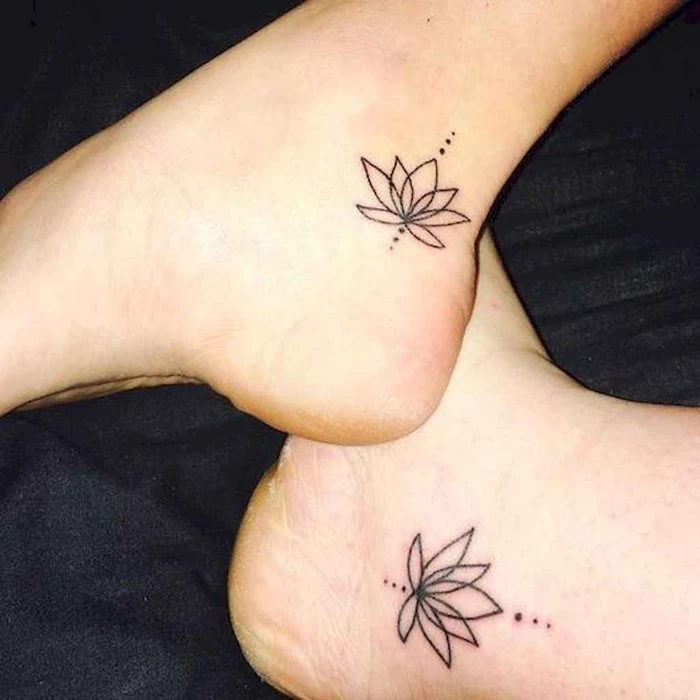
“The most common thing people don’t realize is that black ink isn’t always black. Over 10-20 years, it can blur and take on a blue or greenish tint as the ink particles are slowly broken down and redistributed by the body. Bold lines will always age better than tiny, delicate details.” – A common observation from veteran tattoo artists.
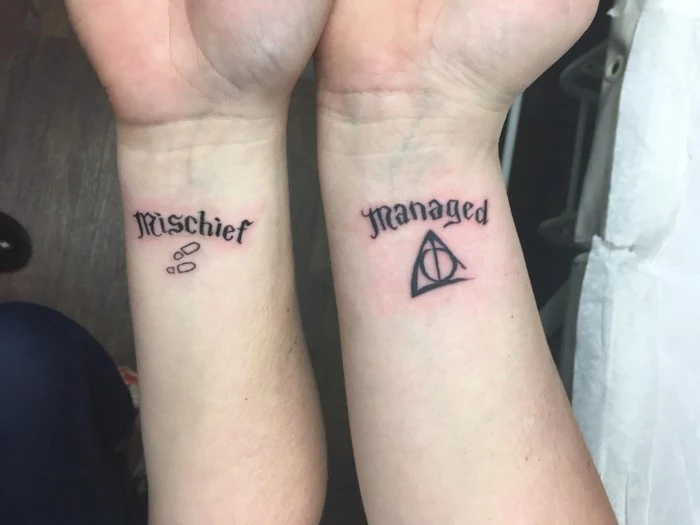
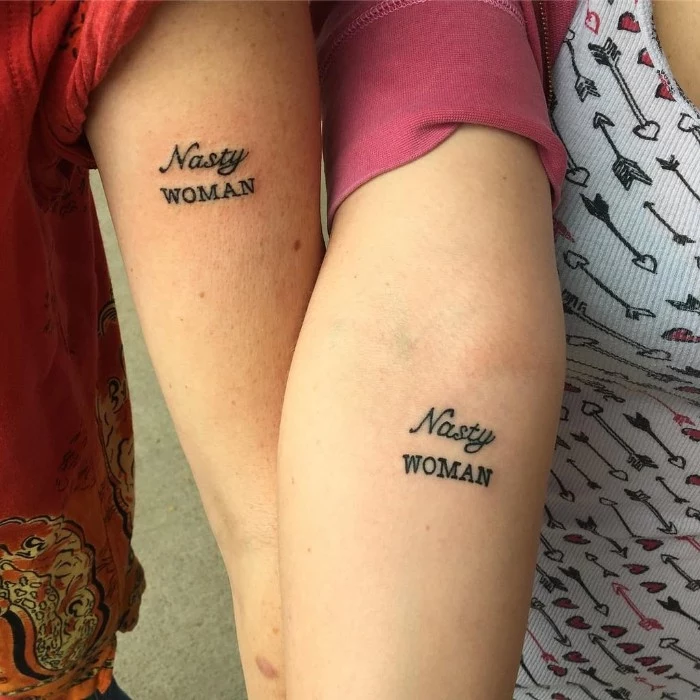
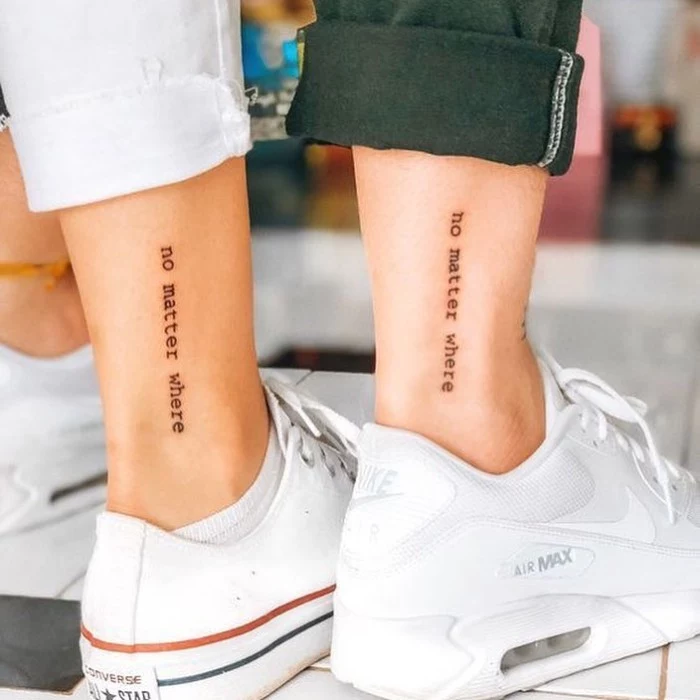
Before you even talk to an artist, create a shared private Pinterest board. The goal isn’t to find the exact tattoo you want, but to discover your shared aesthetic.
- Pin tattoos you both like, but also pin color palettes, paintings, movie stills, and textures.
- After a week, look for patterns. Do you both lean towards bold traditional lines or soft watercolor effects? This visual homework will be invaluable when you brief your artist.
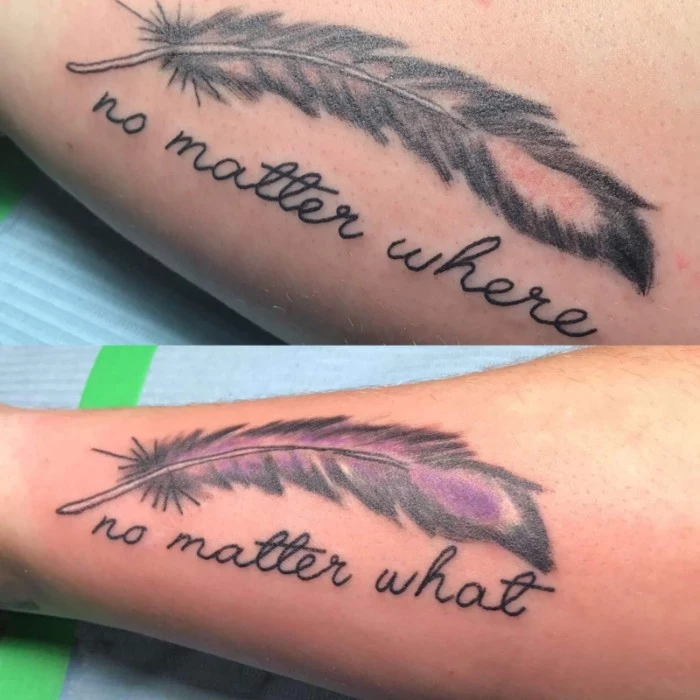
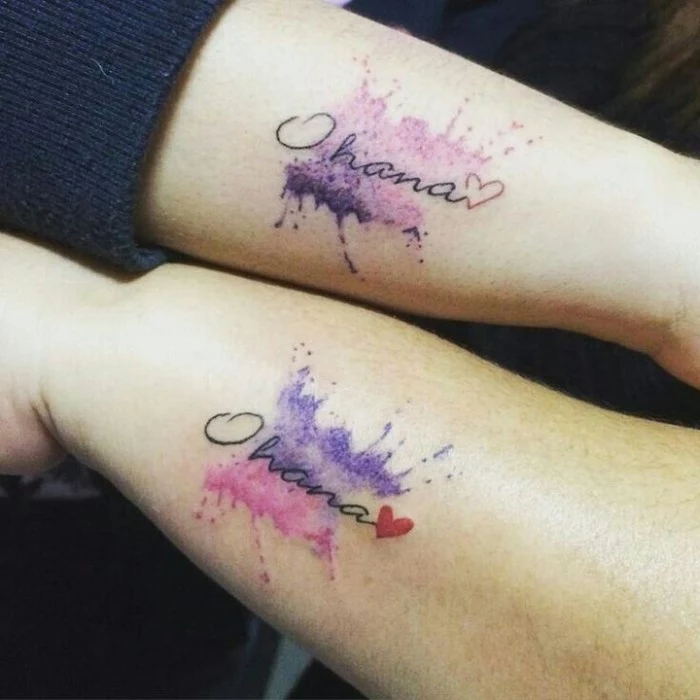
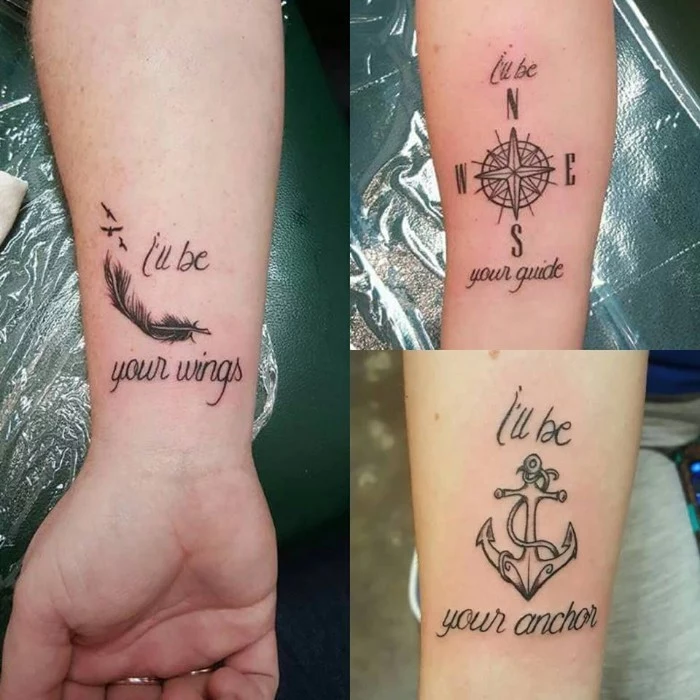
What happens if the friendship ends?
It’s the unspoken fear. The best strategy is to choose a design that you love independently of your friend. If you both get a small wave tattoo because you love the ocean, that love for the ocean will remain, regardless of the friendship. Avoid names, initials, or puzzle pieces that feel incomplete on their own. The tattoo should be a beautiful piece of art in its own right.
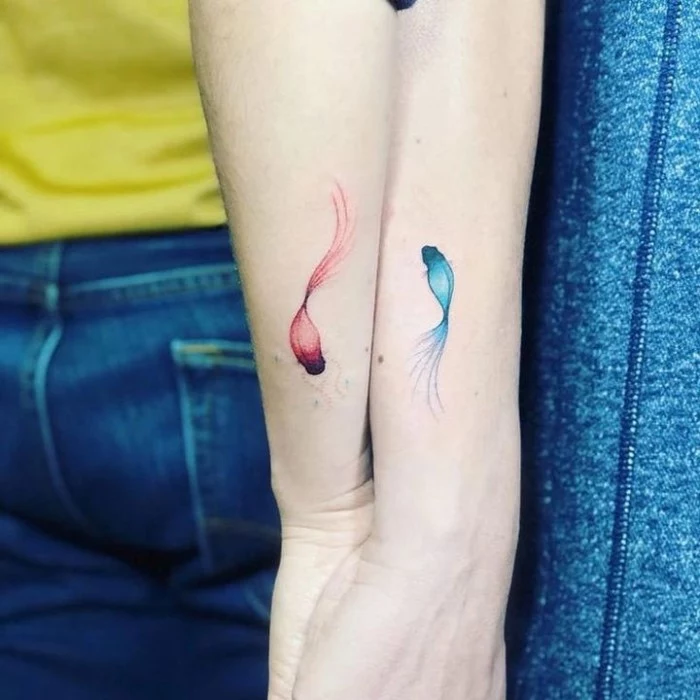
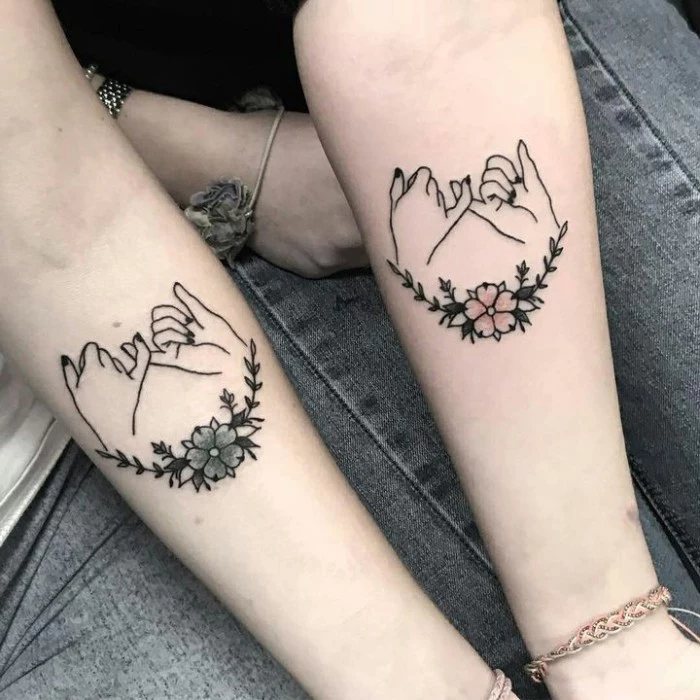
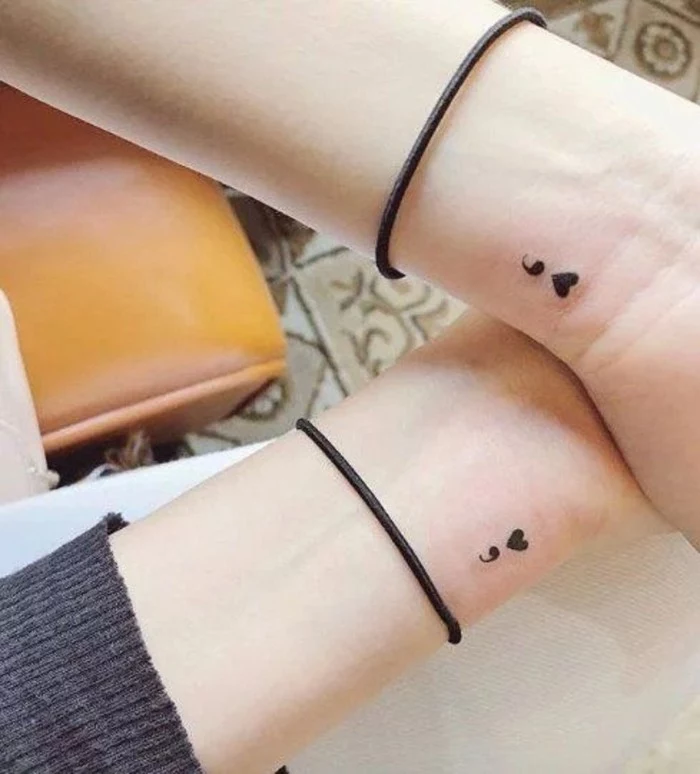
Permanent Ink: A lifelong commitment, a true piece of personal art, and a significant bonding experience. Requires research, investment, and aftercare.
High-Quality Temporary: Brands like Inkbox offer tattoos that look remarkably real and last 1-2 weeks. It’s a fantastic way to test-drive a design or placement with your friend before committing.
Doing a temporary trial can help you work out any hesitations and confirm you both truly love the design.
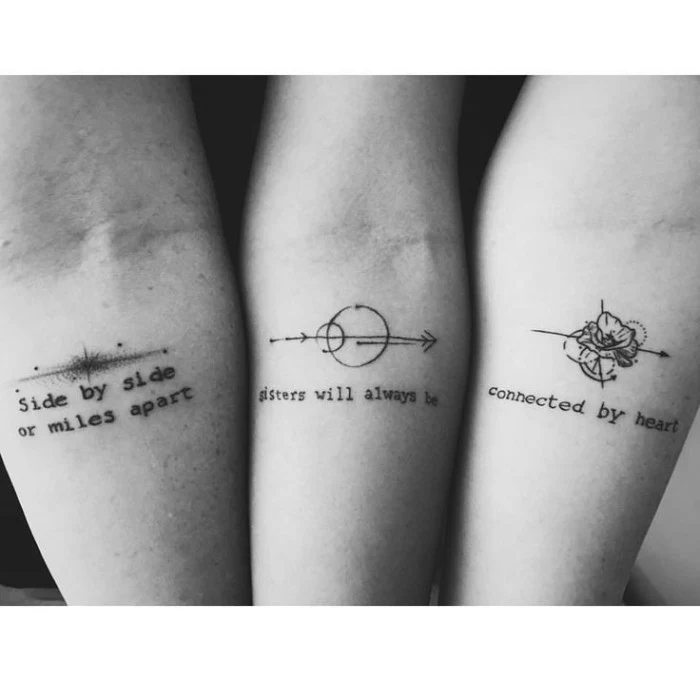
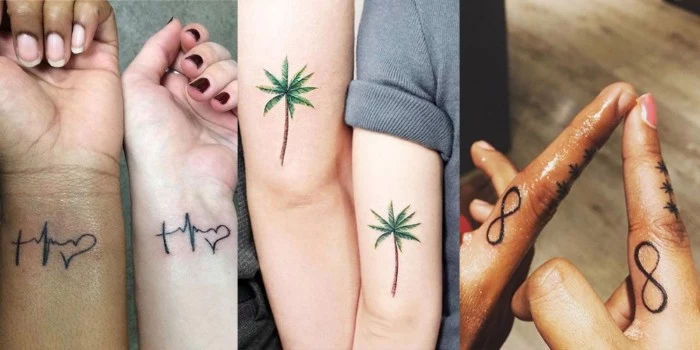
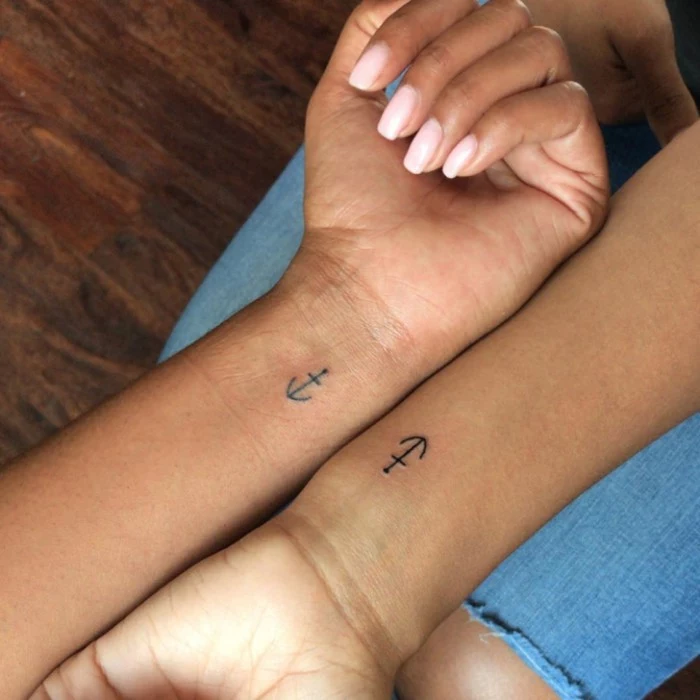
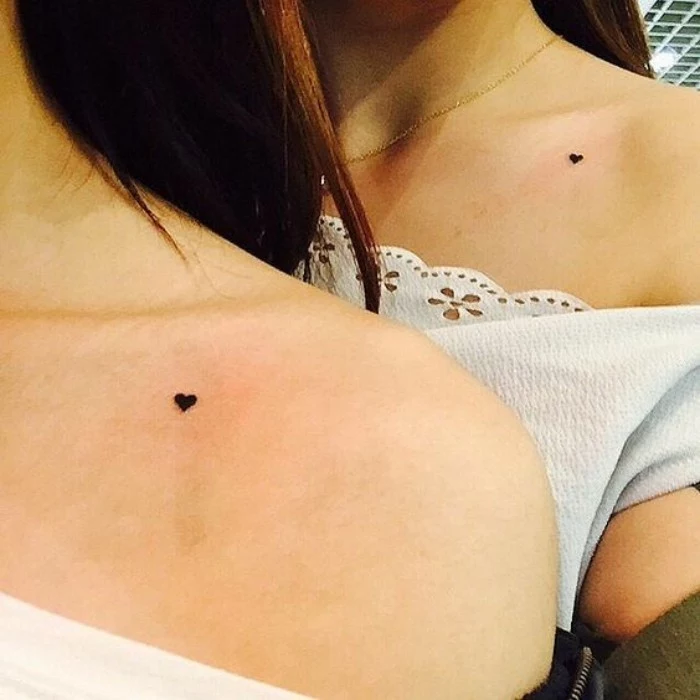
Did you know that a huge portion of tattoo inks on the market are vegan? Major brands like Eternal Ink, Fusion Ink, and World Famous Ink are known for their vibrant, cruelty-free formulas.
These inks use vegetable-based glycerin and hamamelis (witch hazel) instead of animal-derived products. If this is important to you and your friend, just mention it during your consultation; most quality studios already use them as a standard.
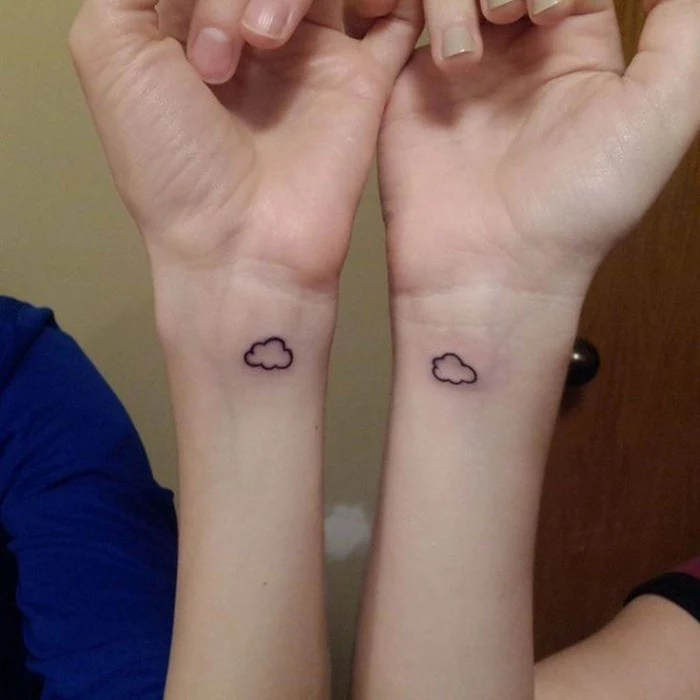
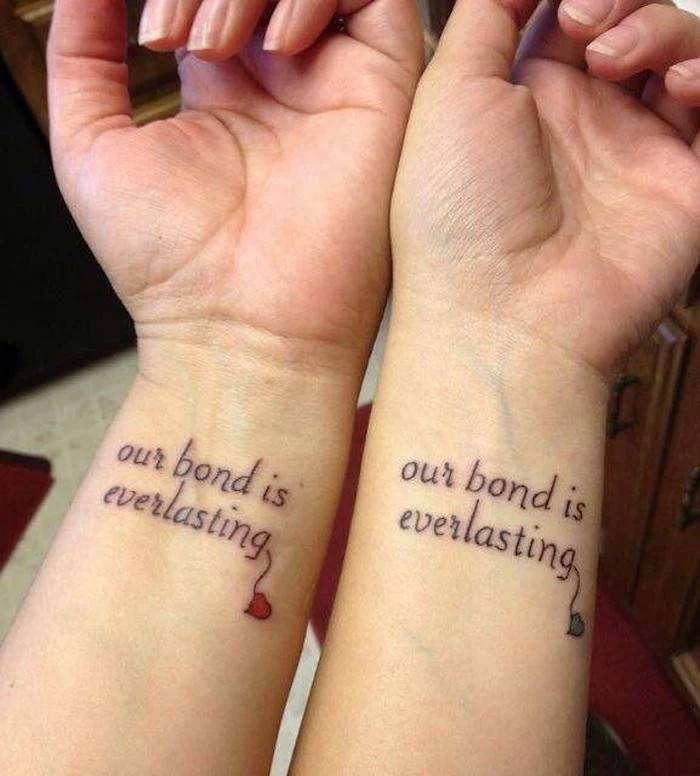
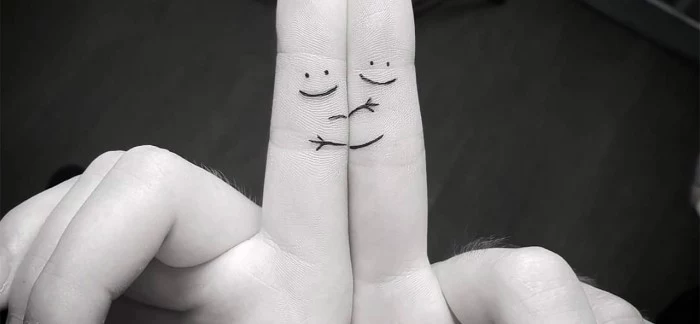
- You’ll check in on each other’s healing progress daily.
- You’ll remind each other to apply lotion or avoid the sun.
- You’ll compare how the lines are settling and the color is looking.
The secret? The aftercare process becomes a new, shared ritual. This two-to-three-week period of mutual care can be just as much of a bonding experience as getting the tattoo itself.


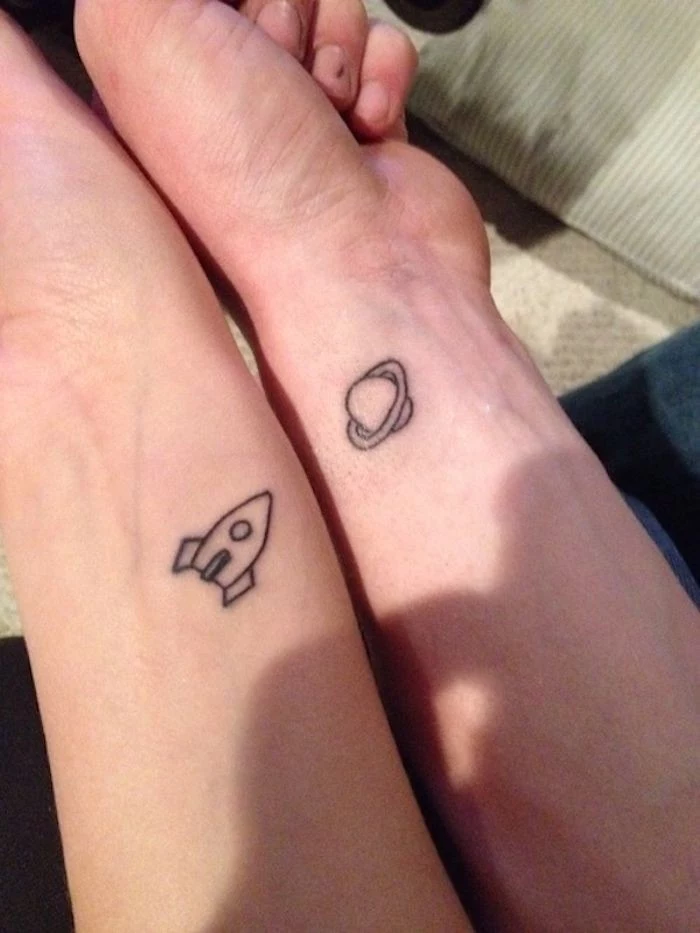
The sun is the number one enemy of a tattoo’s longevity. Once fully healed, you must protect your ink with a high-SPF sunscreen (SPF 30 or higher) every single day. UV rays break down the ink pigments in your dermis, causing vibrant colors to dull and crisp black lines to blur into a fuzzy grey. Think of sunscreen as the cheapest insurance policy for your art.

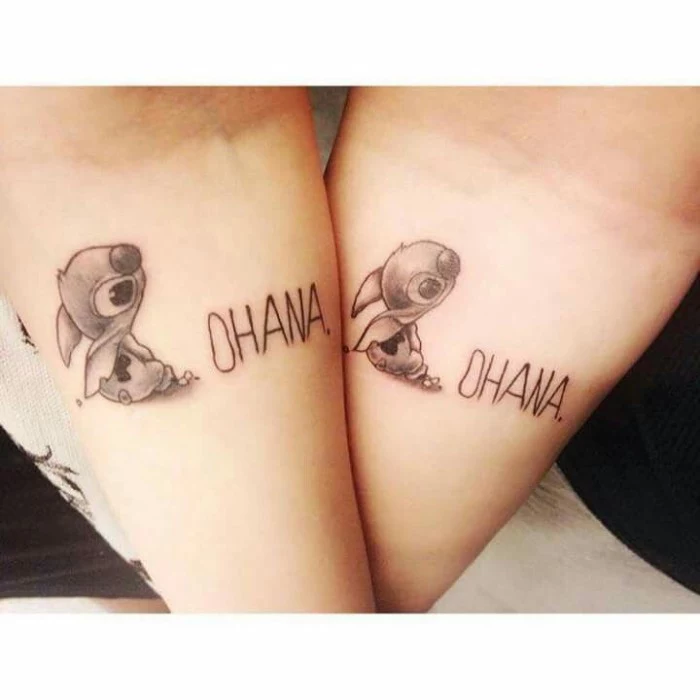
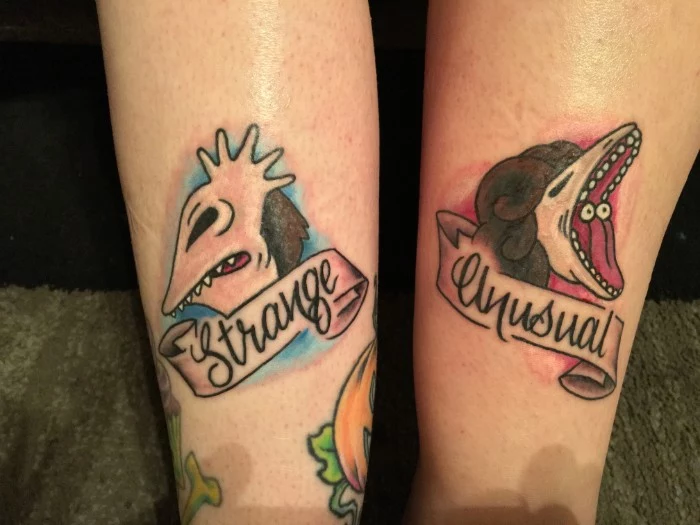
- “Based on this placement, how do you think this design will age over 20 years?”
- “Are there any small details here that might blur together over time?”
- “Do you have a preference for color or black and grey for a design like this on my skin tone?”
- “Is there anything you would change about this design to make it a better tattoo?”
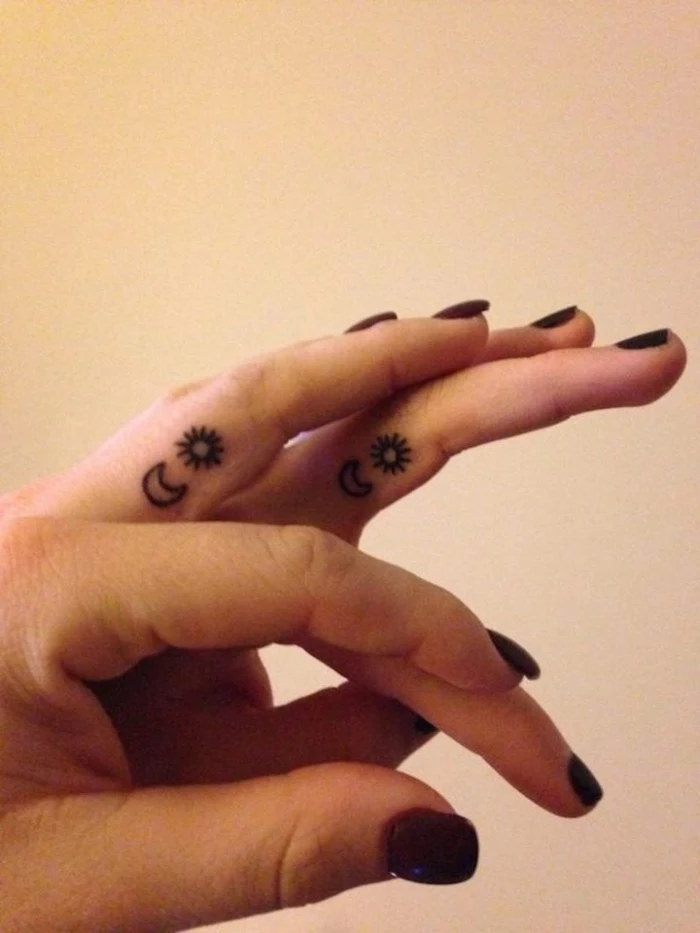
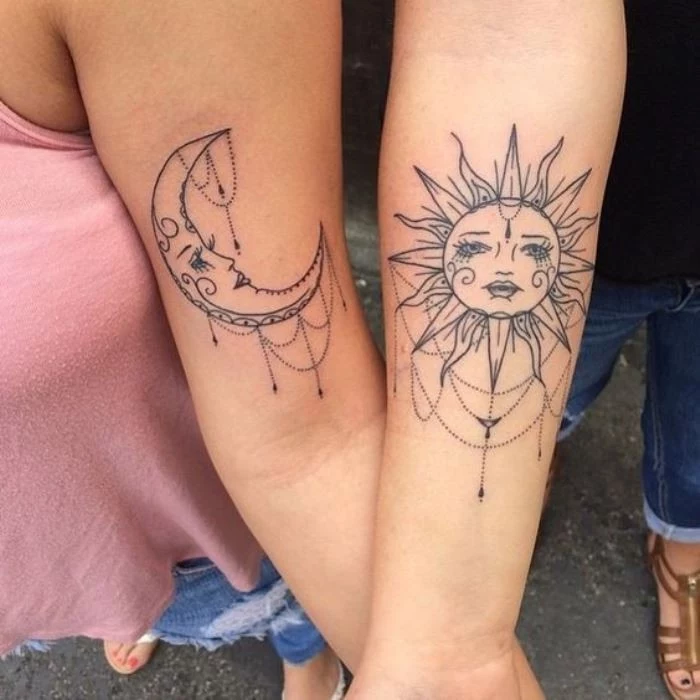
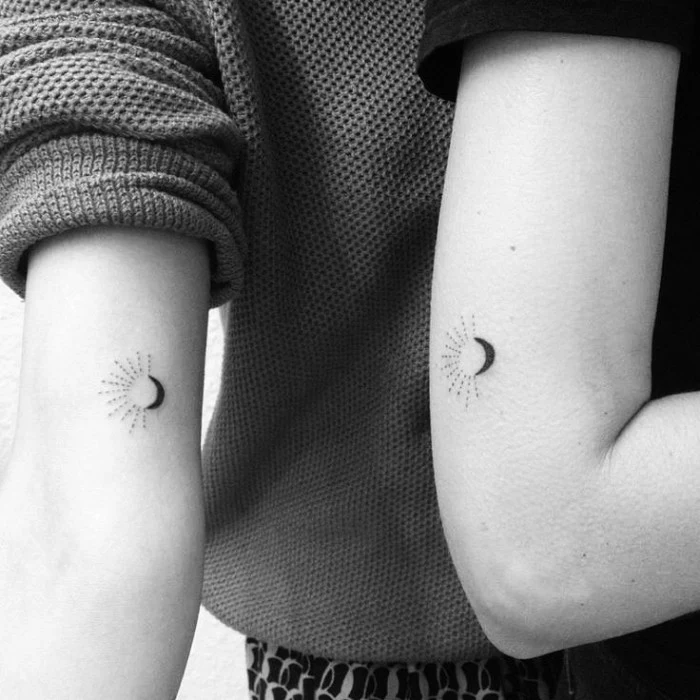
Don’t forget the tip: Tattoo artists are service providers who pour immense creativity and technical skill into their work. A tip of 15-25% is industry standard and shows appreciation for their time, artistry, and the sterile environment they provide. It’s best to bring cash specifically for the tip, as not all shops can add it to a card transaction.
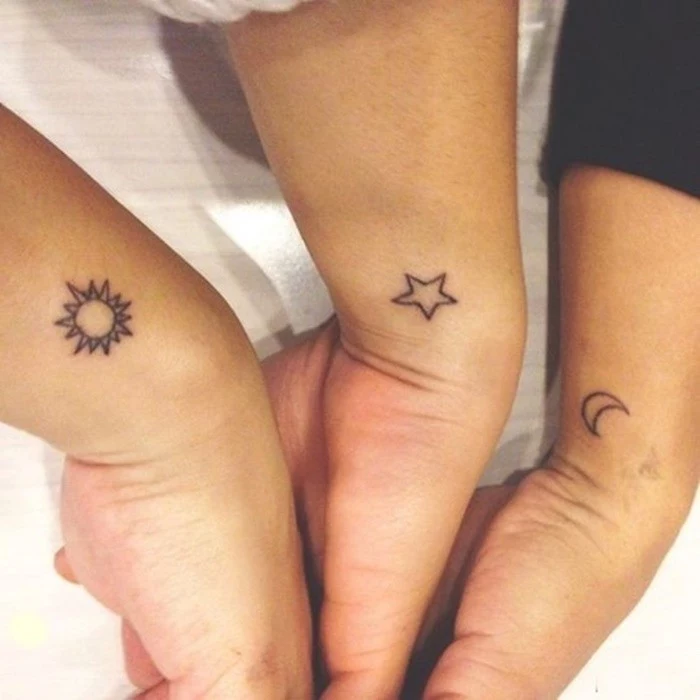
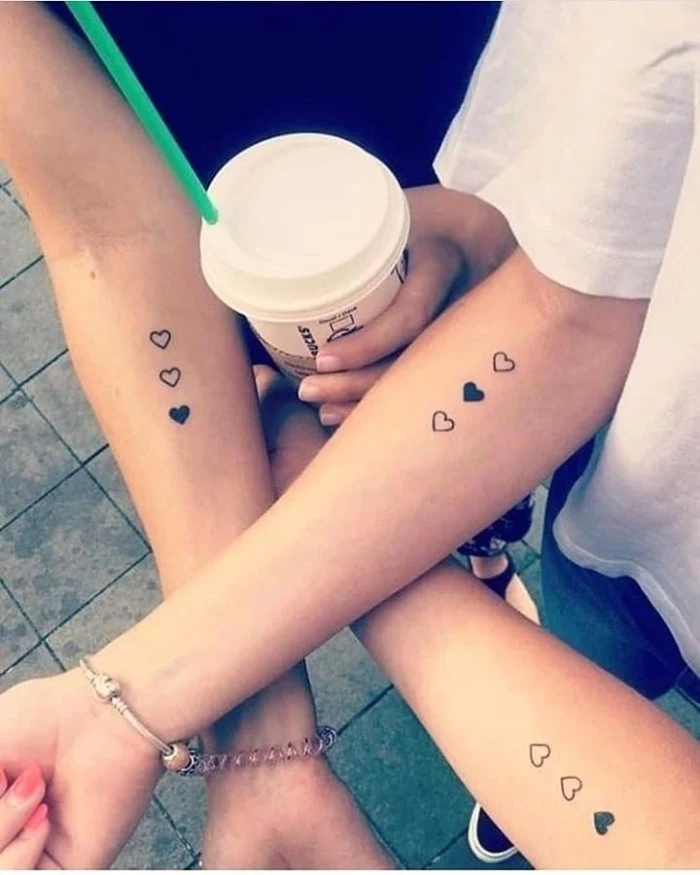
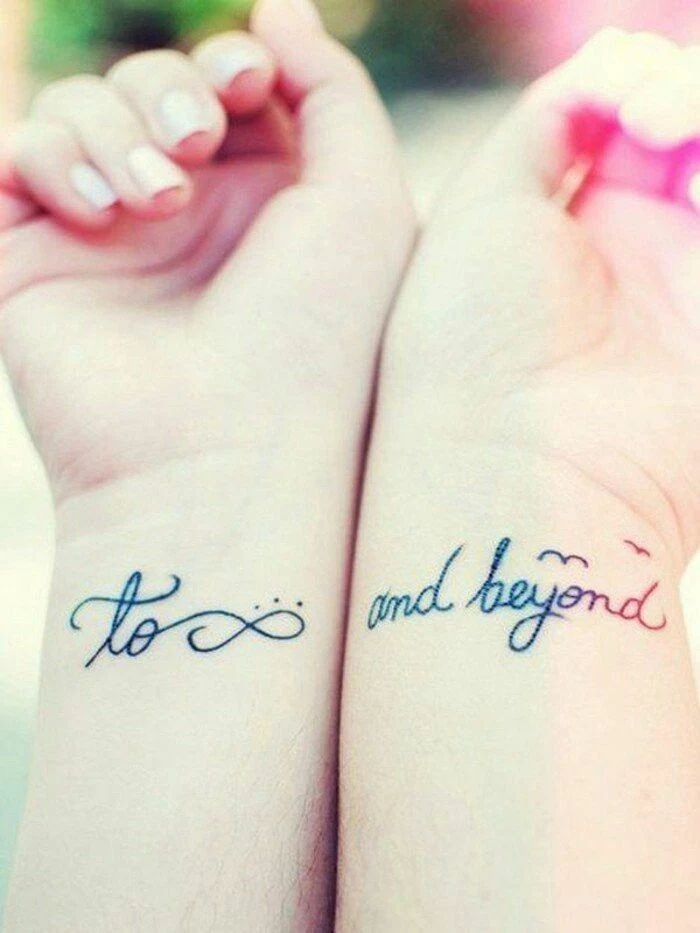
The practice of “tatau” has ancient roots. In many Polynesian cultures, tattoos weren’t just decoration; they marked lineage, social status, and tribal bonds. The act of being tattooed alongside your kin was a sacred rite of passage, connecting you to your community and ancestors.
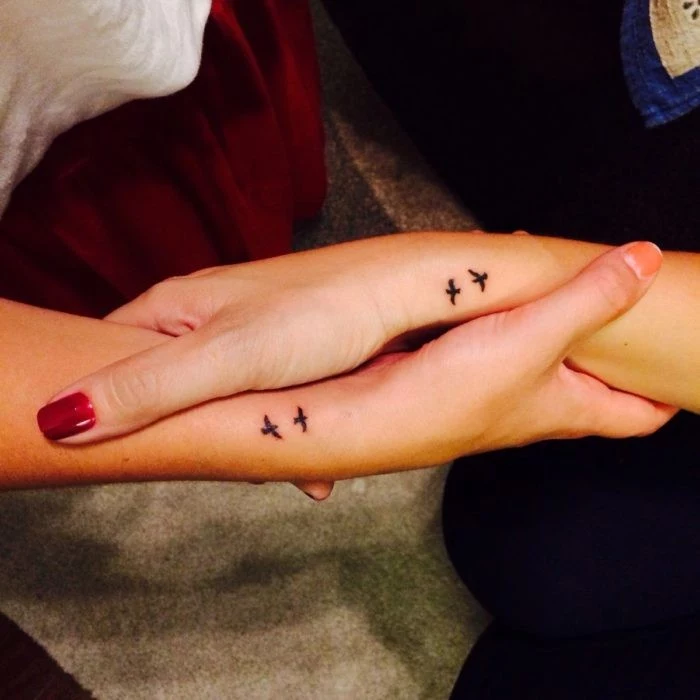
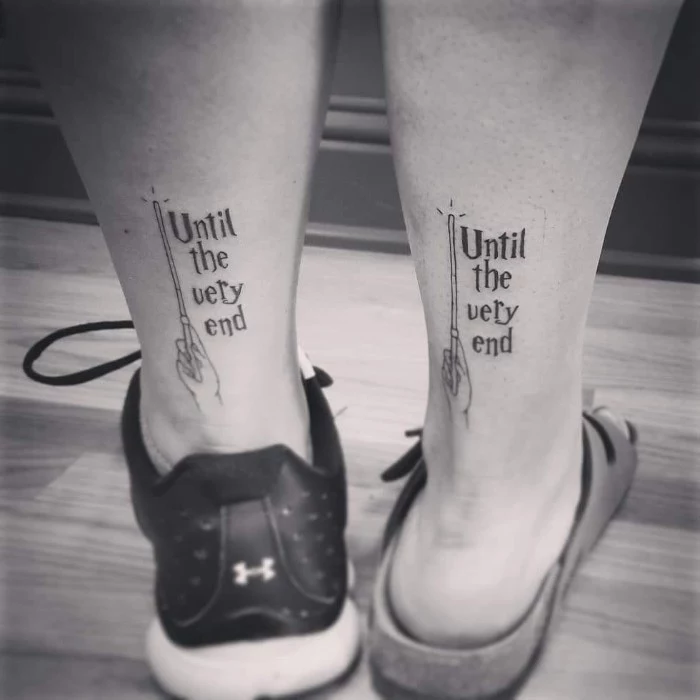
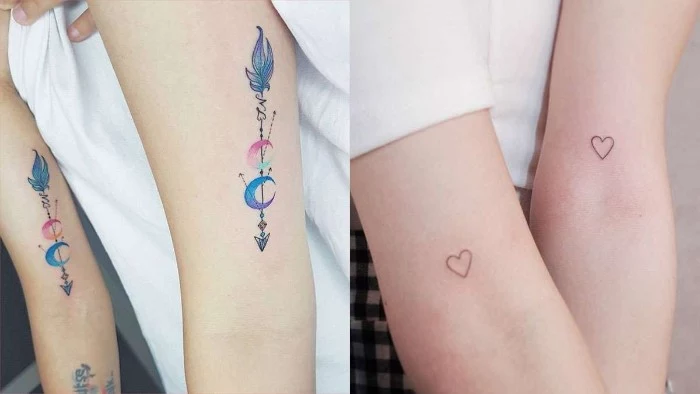
Your tattoo won’t look brand new forever, and that’s okay. Skin regenerates, and ink settles. Here’s what to know about touch-ups:
- Wait at least a year. You need to see how the tattoo fully settles before deciding if a touch-up is needed.
- Most artists offer one free touch-up within the first year, particularly for lines that may have healed patchily.
- Years later, a refresh can bring back vibrancy, but it won’t fix a fundamentally blurry or poorly designed tattoo.
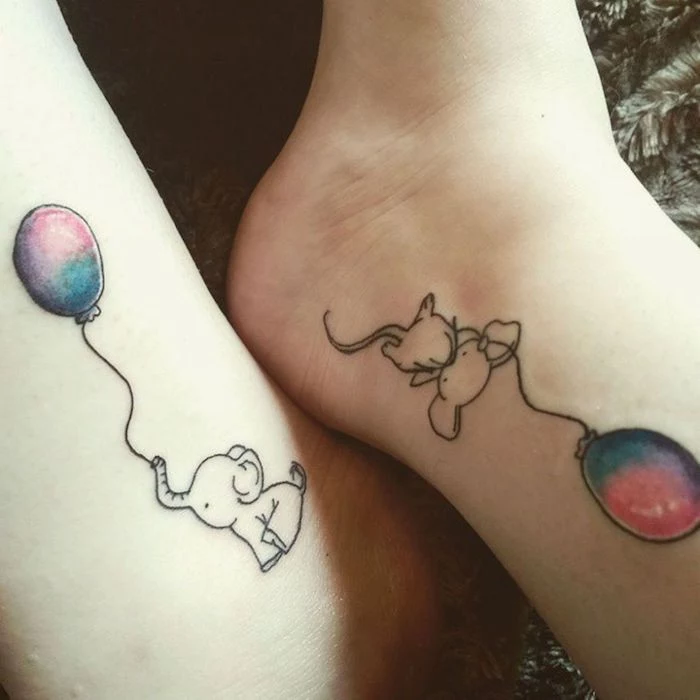
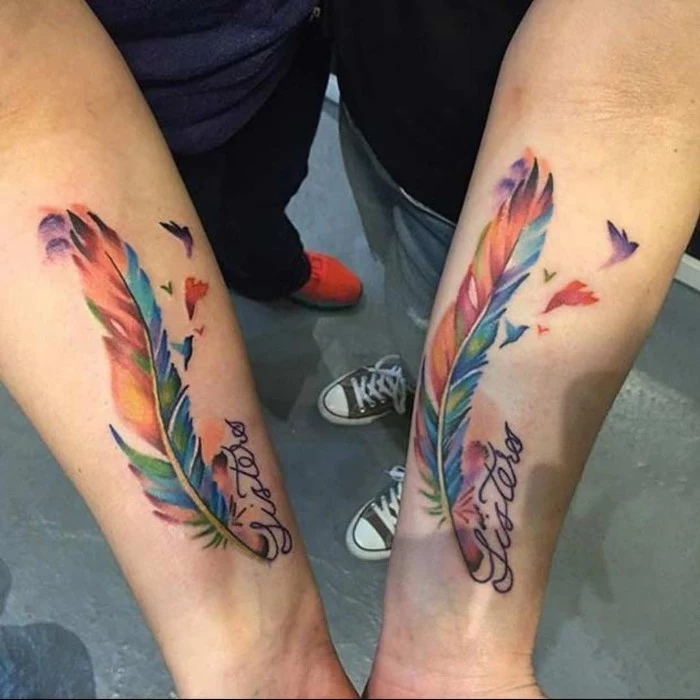
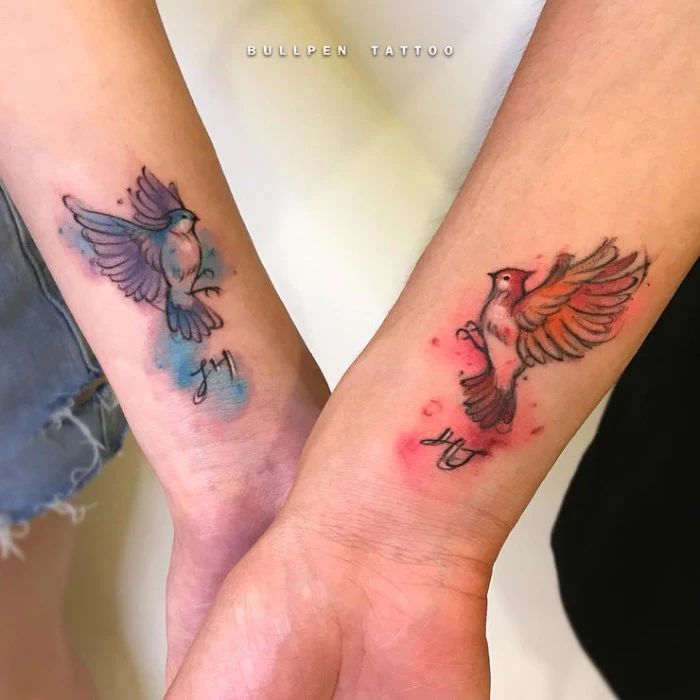
Can I use numbing cream before my appointment?
While tempting, you must discuss this with your artist beforehand. Some numbing creams can change the skin’s texture, making it rubbery and difficult to tattoo, which can compromise the quality of the final piece. Many artists have a preferred brand (like Zensa or TKTX) and application process. Never show up with numbing cream on without prior approval, as they may refuse to tattoo you.
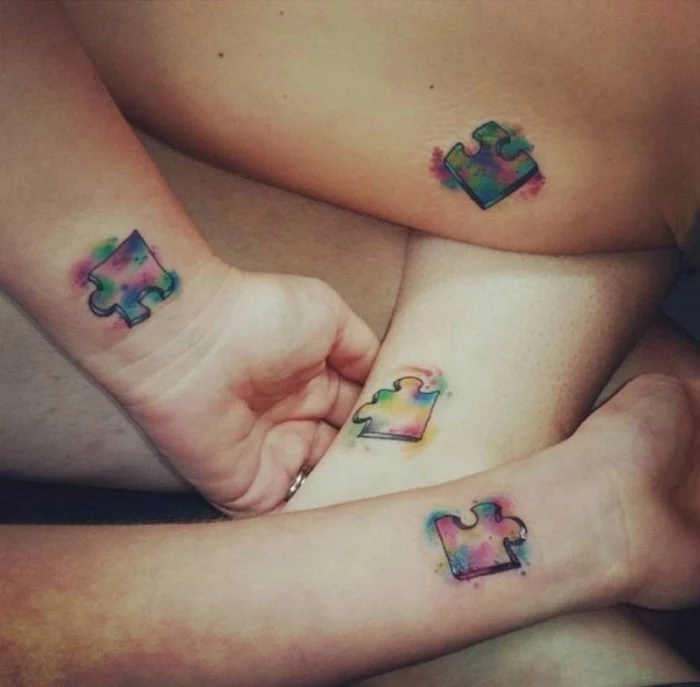
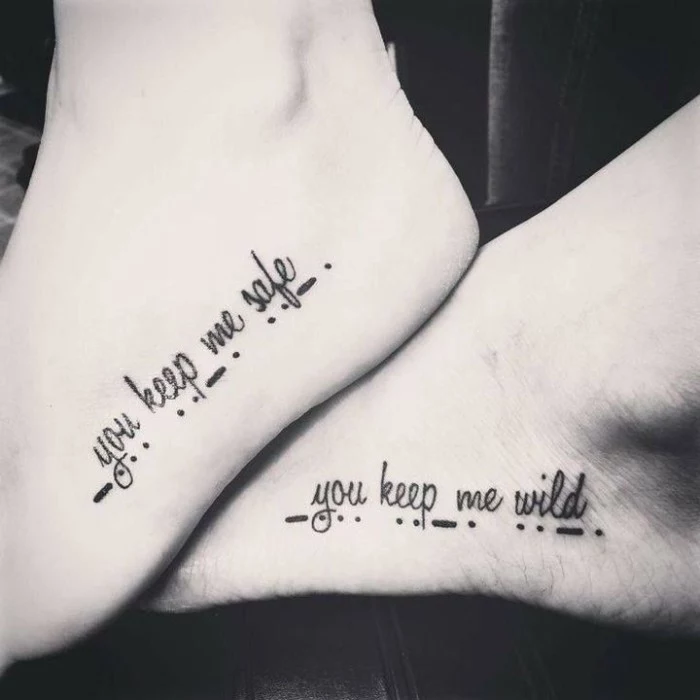
Perfectly Matching: You both get the exact same design. This creates a very clear, immediate visual link. It’s classic, bold, and leaves no doubt about the connection.
Artfully Complementary: You get two designs that are different but belong together, like a lock and a key, or two halves of a single image. This allows for more individual personality while still celebrating the shared bond.
Complementary designs are often a great compromise if you have slightly different aesthetic tastes.

